
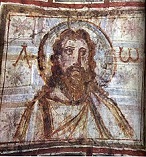




TLW's Jesusscope™ (Jesus Historyscope) |
By T.L. Winslow (TLW), the Historyscoper™ |
© Copyright by T.L. Winslow. All Rights Reserved. |
Original Pub. Date: Mar. 8, 2016. Last Update: Dec. 9, 2025. |
Westerners are not only known as history ignoramuses, but double dumbass history ignoramuses when it comes to the history of Jesus Christ. Since I'm the one-and-only Historyscoper (tm), let me quickly bring you up to speed before you dive into my Master Historyscope.

Jesus Christ (Jesus of Nazareth) (-4 to 33) is the central figure of Christianity, and one of the greatest enigmas of all history. Let's use the power of historyscoping to see what light can be shed.
About 150 B.C.E. the Hasmoneans begin to restore autonomy to Judea, but the Jews begin to split into various sects, incl. the Pharisees (Heb. "divide, separate, set apart") (who accept the written and oral law and advocate democratization of religious practices), the Sadducees (Heb. "tsadduqi" = "right just", after Zadok, first high piest of ancient Israel, Ezek. 40:46) (who reject the oral law and represent the ruling hierarchy, becoming obsessed with separating themselves from whited, er, defilement), and the monk-like ascetic Gnostic Essenes (known for wearing white garments and serving as healers); the Dead Sea Scrolls are begun by clean-freak (daily ablution) Essene monks (Sadducee winer-diners?) in Qumran W of the Dead Sea; "Those Pharisees would purify the Sun itself."
About 30 B.C.E. Babylon-born Jewish Pharisee sage Hillel the Eder (-110 to 10) founds the House of Hillel in Jerusalem, which later rejects upstart Jesus Christ and the Gospels in favor of the Mishnah and the Talmud, and takes the mass of the Jewish people with them until the 5th cent. C.E.
In 5 B.C.E. a bright comet is recorded by Chinese astronomers that is visible for 70+ days.
On Mar. 13, 4 B.C.E. Jewish rabble-rousers Judas and Mathias are burned alive for protesting the placement of the golden eagle at the entrance to the Jehovah-less Temple of Jerusalem.

On Apr. 7, 4 B.C.E. Jewish proxy king of the Roman-occupied Holy Land (since -39) Herod I the Great (b. -73) has his eldest son Antipater (b. -45) (son of Doris) executed (3rd son he kills) after Augustus refuses to intervene, then dies five days later on Shebat 2 (Apr. 12) in Jericho after suffering "an intolerable itching of the whole skin, continuous pains in the intestines, tumors in the feet as in dropsy, inflammation of the abdomen and gangrene of the private parts, engendering worms, in addition to asthma, with great difficulty in breathing, and convulsions in all his limbs" (Josephus), and is buried in his fortified winter palace and mausoleum in Herodium 7 mi. S of Jerusalem (near modern-day Zatara); his Roman-educated sons wait in the wings while he orders the leaders of the Jewish nation burned alive in the Hippodrome in Jericho on his death so that the Jews will weep at his own funeral (Herod's sister Salome and her husband Alexas get the order countermanded?); his penultimate will names Antipas as his heir, but shortly before his death he makes a final will naming Archelaus (Matthew 2:22), causing Augustus to constitute him an ethnarch and divide the territory, with half going to Archelaus and half to be split by Antipas and Philip; Herod Archelaus (b. -23) becomes ethnarch of Samaria, Judea and Idumea (deposed in 6 C.E.); Herod Antipas (b. -21) becomes tetrarch of Galilee (home of Jesus Christ) and Perea (E bank of the Jordan) (home of John the Baptist) (deposed in 38 C.E.); Herod Philip (-20 to 34) becomes tetrarch (ruler of a fourth) of modern-day SW Syria and the Golan Heights (Gaulanitis, Batanea, Trachonitis, Autanitis, portions of Iturea and Hulitis) (all largely non-Jewish); Herod's sister Salome I (-65 to -10) is given control of Phaselis, Yavneh (Jamnia), and Ashdod (Azotus); daddy's favorite Archelaus immediately proves to be a good choice for him as he orders 3K Jews killed on Easter for trying to get him to rehabilitate Judas and Mathias.

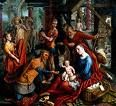
On June 24, 4 B.C.E. Judean Jewish prophet (of voice crying in the wilderness eating locust and honey fame) (St.) John the Baptist (Baptizer) (d. 32 C.E.) is born to Jewish priest Zechariah and his wife Elizabeth; according to the Gospel of Luke 1:5-25 he is conceived 6 mo. before Jesus on the night of the Day of Atonement (Yom Kippur), which would be in late Sept. *Sept. 24?) or early Oct. - so what's this I hear about you're fall and I'm spring? On Dec. 25, 4 B.C.E. Judean Christian Messiah Jesus Christ of Nazareth (Joshua or Yehoshuah bar Joseph) (d. 33) is born in Bethlehem to the Virgin Mary and Joseph (a carpenter or stoneworker), both of the House of David; don't ask about the In-Vitro Fertilization Technique used?; the official Roman Catholic Church position is Dec. 25, although the shepherds are in the fields with the flocks at the time of his birth, which would more likely be spring or summer, which might make John the Baptist the only Dec. baby?; Jesus is crucified on the day of his conception (Mar. 25)?
In 4 B.C.E.-29 C.E. the Unknown (silent) (lost) (missing) years of Jesus sparks rampant speculation about trips to Britain, Kashmir, the Judean desert (Essenes) et al.
In 5 C.E. Jewish Christian apostle (Pharisee-turned-Christian) ("Apostle of the Gentiles") (St.) Paul (Gr. "little") (Saul) (Heb. "asked of God") (the Apostle) (of Tarsus) (5-65) is born in Tarsus, Cilicia, Roman Empire.
In 6 C.E. Jews and Samaritans appeal to Rome to end the bad rule of Herod Archelaus, and he is banished to Vienne in Gaul and his realm annexed as an autonomous part of the Roman Province of Syria, to be administered by a prefect in Caesarea whose job is to assess property and collect taxes for the emperor, for which post Roman sen. Publius Sulpicius Quirinius (d. 21) is chosen (for the 2nd time?); Coponius becomes the first prefect (hegemon) of the Roman Province of Iudaea (Judea) (Syria, Samaria), which incl. Jerusalem and environs, the first in a line stretching to the year 41, based in the new Roman capital of Caesarea on the coast; Syrian Gov. Quirinius takes a census of the Jews, which shakes them up because it destroys their last illusions of self-rule (Luke Ch. 2), and there is a bloody revolt (Acts 5:37) led by Judas the Galilean (Gaulanite) (Josephus, Jewish Antiquities, XVIII, 1-4 [i,1]), founder of the Jewish Sicarii ("dagger-wielders") (known for concealed daggers) (armed freedom fighters drawn from the Pharisees and Essenes, not the small wealthy land-owning group of Sadducees, who are Quislings); Annas (Ananus), son of Seth is appointed Jewish high priest in Jerusalem by Quirinius (until 15); Herod the Great's descendants through #7 Herod (Marcus Julius) Agrippa II (27-100) remain client kings of Judea until 96 C.E.
On Mar. 25, 29 C.E. (under the consulship of the two Gemini) Jesus Christ is crucified, according to Tertullian (160-230) in Adversus Judaeos, Ch. 8; he confused the start of his 3-year ministry with the end? In spring 29 (15th year of the reign of Tiberius Caesar) (Luke 3:1-3) the ministry of (St.) John the Baptist (Baptiser) (-4 to 31) begins in the wilderness of Jordan (Matt. 3:1-12; Mark 1:1-8, Luke 3:1-18, John 1:6-28), and in the fall Jesus (Jehoshua) of Nazareth (-2 to 33) is baptized by him in the Jordan River, making him Jesus Christ (Gr. "anointed"), and launching his ministry as the Jewish Messiah (Heb. "anointed") (Matt. 3:13-17, Mark 1:9-11, Luke 3:21-38, John 1:32-34); Jesus goes solo into the Judean wilderness to fast and resist the temptations of Satan, who owns all world govts. (Matt. 4:1-11, Mark 1:12-13, Luke 4:1-13), then makes his first disciples in the Upper Jordan Valley (John 1:35-51); meanwhie John testifies concerning Jesus in Bethany beyond Jordan (John 1:15; 29-34); Jesus performs his first miracle (turns water into wine) at a Wedding Feast in Cana of Galilee (his own?), then visits Capernaum (John 2:1-12).



30-35 Sorry, historyscopers, but? --it happens in the Roman province of Judea; nobody knows for sure, and it depends on whom you want to believe; a riddle wrapped in a mystery inside an enigma, the greatest coverup in history; the Great Track of Time enters not only a Dark Alley but a Black Hole, becoming an endless source of powerful fiction claiming to be fact, with the dividing line very hazy until centuries later - oh my gosh, I smell an Emmy? While visiting the Jewish Temple in Jerusalem, Jesus made a point of attacking the moneychangers (Mt. 21:12, Mk. 11:15, John 2:14-15), I wonder why?
Way back when, nobody knows, a bunch of Roman pagans got infected with monotheism, and the most bookish kind, Judaism, and despite the Jews claiming to be the Chosen People, with pagans not invited, they managed to morph exclusivist Judaism into a new one-size-fits-all version by literally twisting the Jewish Bible inside out and claiming to discover that it was there all along, but needed a prophet to reveal it to them, whose life only they can tell us about, since nobody but believers documented it, a strange wonderful brew of historical facts and unverifiable miracles.
The net result was a new religion called Christinsanity, er, Christianity, whose Aramaic-speaking Jewish founder Jesus Christ (-4 to 33) left no writings, works of art, statues, buildings, swords, armor, bling, portraits, descendants, or even newspaper accounts, worse, no body, because he was allegedly resurrected from the dead by God on Easter, visiting his believers for 40 days before being translated to Heaven, and now sits at God's right hand waiting to return and judge the world and everybody who ever lived, leaving it to his 12 Apostles to spread the word that he wasn't just a man but the Son of God, whatever that means, most followers apparently taking him for God himself, despite the intractable philosophical difficulties that rocked the Church for centuries.
Okay, he is God, who loved the world so much he gave his only begotten Son, that whoever believes in him won't perish but have eternal life (John 3:16), that is, as a man Jesus came to try to tell people that one day God will end the world, and that as God he himself judge everybody who ever lived, giving them either eternal death slash punishment, or eternal life slash joy, based on whether they ever sinned. Of course, everybody Jesus met already was covered in sin and deserved eternal death, but he promised them that if they truly repented their sins, died to the world and its sins and got born again as a child of God, then got baptized to symbolize their transformation, and sinned no more, when the Day of Judgment came he would suspend their sentence for their prior sins and admit them to eternal life, else he wouldn't, case closed, next case (1 John Ch. 3). As he went preaching, his number one message was sin no more, sin no more, read my lips, sin no more (John 5:14, 8:11).
So the original message was very direct and simple: repent your sins, and sin no more, and run the good race hoping for the crown of eternal life, no matter how much the Devil tempts you to sin or the world persecutes you, lions in the arena, no problemo. Oh yes, you get sent the Holy Spirit or Holy Ghost, which will put a shield around you so that the Devil can never make you sin, only tempt you, yes, you can go your while life without lying, coveting, committing adultery even with the eyes, and following after other gods, every possible sin worthy of death is covered in the Ten Commandments, one part of the Bible that's pure legalese and easy to translate. But you'll have to give up the world and its lures, because one day God will burn up the world and all its works (2 Peter 3:10), including history itself, and create a new heavens and a new earth, where only the worthy may reside (Is. 65:17).
To become a Christian ("little Christ") and live with Christ forever in his Kingdom of Heaven, believers must take everything about him on faith, which is good since they don't have to learn Aramaic or any history other than that in the Hebrew-Aramaic Old Testament and the Greek New Testament, consisting of the Four Gospels (Matthew, Mark, Luke, and John) and the Acts of the Apostles, and no theology other than that in the Epistles of Paul, Epistles of Peter, Epistle of James, Epistle of Jude, and Epistles of John, or any eschatology other than that in the Book of Revelation (Apocalypse), then undergo Baptism, never mind if it's totally incomprehensible. According to the New Testament, there's no need to study theology and wow Judge Christ by passing a final exam, because all you need to do is sincerely repent your sins (as defined by the Ten Commandments) and quit sinning, keep it simple stupid. But it's also bad, since it's all too easy to take Christ as a fable that was created just to support a fat and wealthy clergy class, it's doesn't take a Karl Marx. In practice, there were soon many backsliders who fell away and went back to a life of sin, and apostates who denied their faith under persecution, and the Bible was quick to tell them that if they blasphemed the Holy Spirit that was sent them when they got baptized and which protected them so that the Devil could never make them sin, and began sinning again, making them into children of the Devil, there would be no chance for a second repentance, because that would be to ask Christ to be crucified a second time, putting him to "open shame" (Mk. 3:29, Heb. 6:4-6).
This all pushed believers' hot buttons in the first century, the second century, even the third, but eventually the church developed a hierarchy, and the bishops at the top got to thinking that maybe Christ would never come back to judge the world because he was indeed a beautiful fable just designed to give them a good living off the baptized suckers, and began modifying the original formula into what's been common ever since, namely, the Devil's Religion: just join the church, let it save and baptize you, then keep paying it tithes, and you can go on sinning all your life because you are "saved" and have a pass. Of course, the Devil wants all his worshipers to believe they are saved FROM the Last Day and the Judgment Seat, and get instant transportation straight to paradise, and if you're aren't ready yet to worship him in all his evil Satanic glory, he can easily appear as an angel of light to make you feel good about it (2 Cor. 11:14), ask Muhammad and Joseph Smith, or any pope.
Sorry, but the whole point of the New Testament was to show that Christ came the first time as a savior, but will come a second time as a judge, and his forgiveness is dependent on conditions, namely, repent of your sins and sin no more, it's like a bankruptcy that gives you a clean start, you can only do it once, what do you think the judge has on his forehead, the word Dumbass. If it's not a fable then you have a summons and court date, and when you face Judge Christ naked and alone clothed with sin, sorry, he already walked a mile in your shoes and lived a far more difficult life without sinning, so he will tell you to go with your father the Devil to the Lake of Fire, where you will suffer eternally in the knowledge of being cut off from God forever. Your precious world you sold out to is burned up, there isn't even any air to breathe or ground to walk on, much less pot to piss in, and Christ's court is the ultimate Supreme Court, because he is God himself, and it'll all be done in the twinkling of an eye and there is no appeal and instant satisfaction of judgment by his bailiffs the angels, it's a Roman type court where the judge is prosecutor and defense attorney at the same time, you get perfect due process, fuck the ACLU it went to you know where.
That's the beautiful story, fable or fact, we can't know until the Last Day, if there is one. The reality of the Roman Catholic Church, of course, as we shall see, was that it was taken over by the Devil, who twisted it all to the nth degree, making the bishop of Rome the pope, who has the keys of Heaven and Hell in his hands, and can alone save you as long as you kiss his hand and other body parts, voila, the Church of the Devil that has attempted to rule the world forever. To make up for the fact that you never stop sinning, they developed the Mass where Christ is crucified for you fresh, and you eat his body and drink his blood to order like a fast food meal. One of the first big signs of its corruption was their readmittance of apostates after each persecution ended, apostates who pay their tithes that is, that's why they call it the Catholic Church, Catholic means everybody is in, as well as all their sins, they're all in, along with all their filthy lucre, bwahaha, the Devil is insuring that when the real Day of Judgment arrives nobody will be saved because Christ will decide they're all his children not sons of God. Of course the Church bet on Christ never coming back, and it's been 20 centuries, no wonder it is the richest and most corrupt outfit in the world, thanks for the memories. As for the Protestants, they started by breaking off from the Church when its corruption went over the top, but they all kept the Devil's religion of claiming their churches save people, and/or that they can go on sinning and remain saved as long as they pay their tithes, in other words, they serve Mammon rather than God and are all sellouts (Mt. 6:24). The Bible says you can be born again, but it doesn't allow you to go around saying you've been saved, since only at the Last Day will Judge Christ decide that, thus by going around claiming you're saved you're sinning by lying and taking the Lord's name in vain, and insuring you won't be, pass the popcorn.
Speaking of persecution, from the start the Jewish priests hated this blasphemous Jewish sect, which according to the Gospels made them plot to get Jesus (but stangely not his disciples) arrested and crucified by the Romans for sedition, and the tolerant polytheist pagan Romans finally had enough of them too when they refused to worship the Roman emperor as a god like every other good citizen, labeling them as atheists and traitors, and forcing the cult underground, where they mainly recruited slaves but eventually penetrated the upper classes. The spectacle of Christians being fed to wild beasts in the arena while filled with joy at the prospect of being with Christ was a powerful recruiting tool, ask Denver Broncos quarterback Tim Tebow why he paints John 3:16 on his face. Too bad, the early personalities and their organization are shrouded in mystery, leaving us mainly with the New Testament, and the takeover of the Roman Empire in the 4th cent. by the monomaniacal intolerant Roman Catholic Church gave them the opportunity to destroy, alter, or manufacture historical records, so it's one of the greatest coverups in history and we can only hope for glimmers of light and cast theories about what really happened, sorry.
Talk about coverup, the disturbing parallels between Christianity and pagan Sun worship make many suspect that Christ was a fictional figure pasted together by brainy Jews based in some library in Alexandria or Babylon out of twisted Old Testament texts foretelling the Jewish Messiah, who was supposed to conquer the world and make everybody love Jews, but obviously hasn't shown up yet, unless it was him, get it? Why would Jews conspire to foist a fictional religious founder on the pagan Roman Empire? Answer: Jews don't get mad, they get even, and this time it was for destroying Jerusalem along with its Temple and priesthood in 70 C.E. and causing the Jewish Diaspora. If that was their goal, they achieved it in spades, turning the mean cruel blood-loving superior united pagan Romans into guilt-ridden ever-schisming ever-backsliding Bible-thumping Christian whimps who were easy meat for the hordes of barbarians, tanking the once all-powerful Roman Empire in 476, and giving the wandering Jews a chance to return and restore the Jewish nation of Israel based in Jerusalem, complete with Temple and priesthood, maybe king, ask Mel Gibson about it when you catch him drunk.
Too bad, it's hard to imagine how these fiction authors could palm their writings off and get enough believers to fill a donkey cart, unless they posed as believers and made a career of it, risking persecution, which doesn't compute. Also too bad, there seems to have been a community of Christians before the writings even came out. Also too bad, by 476 the Roman Empire had split into two halves, and the Eastern Roman Empire that controlled Israel stood strong, keeping the Jews out like always. Also too bad, despite displaying a deep knowledge of the Old Testament, the New Testament doesn't read like it was written by Jews, treating them as an alien race who brought their troubles on themselves by rejecting you know who, although he was also a Jew and Christians must worship him as their Savior, what pretzel logic. No surprise, belief in Jesus Christ and respect for the Jewish Old Testament like he had didn't make former pagan Roman Christians automatically love Jews, but backfired, turning many into rabid anti-Semites, some even claiming to be the real "spiritual Jews", with the Roman Catholic and Greek Orthodox Churches both worked to keep the Jews from returning to Israel unless/until they accepted Christ, guess why the Muslim Quran displays a deep knowledge of the Old Testament and Talmud, the pretzel the pretzel the pretzel is twisty, and Christians are the salt of the Earth.
Either way, the Old Testament started it all, and the Jewish Messiah's Mission: Impossible isn't done yet, which Christians explain away as the need for the Jews to finally accept Christ before he returns to judge the world, although in the Jews' thinking that would make them into blasphemers who would face damnation by God. Yet now after 2K years, if Jesus wasn't the Messiah, why do Jews still believe in one, those stiff-necked losers? After the WWII Holocaust, why do any Jews still believe in God anyway, it was mainly atheist Jews who restored the state of Israel in 1948 after chucking the Old Testament? And after 2K years of Christ never returning as promised, how can a Christian still believe in this deadbeat dad, the umpteenth recycling of the Book of Revelation and photos of the Shroud of Turin? Oh yes, they talk to Him all the time, and that's all they need.
On top of all that, Christendom schismed a thousand ways to Sunday over the centuries, and got convolved with the government and its police and military power, getting mixed up with injustices and atrocities that stunk it up, maybe one of the sects is the true one, if Christ returns he'll tell us. The bottom line is that it takes a big brain just to attempt to straighten it all out.

30 On Apr. 7 (Fri.) Jesus Christ is crucified in Jerusalem, according to La. State U. astronomer Bradley E. Schaefer. Shammai the Elder founds a Torah school which often disagrees with Hillel's. Philip the Tetrarch marries his niece Salome (fresh from the John the Baptist boondoggle?); they go childless. This is how life should be? Jesus goes to Jerusalem for the Passover celebration, and drives the money changers (traders) from the Temple (John 2:13-25), then has discussions with Nicodemus (John 3:1-21); Jesus and his disciples begin baptizing in Judea, while John is baptizing in Aenon near Salim, telling his followers how spiff Jesus is (he's from the earth, Jesus is from heaven, etc.) (John 3:22-36); John is imprisoned in Tiberias, and Jesus splits for Galilee (Matt. 4:12; 14:3-5; Mark 1:14; 6:17-20; Luke 4:14), teaching Samaritans at Sychar en route (John 4:4-43); at Galilee he announces, "The kingdom of the heavens has drawn near" (Matt. 4:17; Mark 1:14-15; Luke 4:14-15; John 4:44-45), then heals a boy at Nazareth, reads his commission at Cana, is rejected and goes to Capernaum (Matt. 4:13-16; Luke 4:16-31; John 4:46-54), where he recruits fishermen Simon Peter, AKA St. Peter (-1 to 67), James and John near Capernaum at the Sea of Galilee (Matt. 4:18-22; Mark 1:16-20; Luke 5:1-11); he then heals a demoniac, Peter's mother-in-law, et al. in Capernaum (Matt. 8:14-17, Mark 1:21-34; Luke 4:31-41), then makes his first tour of Galilee with his four disciples (Matt. 4:23-25; Mark 1:35-39; Luke 4:42-43), heals a leper in the light in Galilee, causing multitudes to flock to him (Matt. 8:1-4; Mark 1:40-45; Luke 5:12-16), then heals a paralytic at Capernaum (Matt. 9:1-8; Mark 2:1-12; Luke 5:17-26), recruits Matthew and feasts with tax collectors (Matt. 9:9-1; Mark 2:13-22; Luke 5:27-39; 4:44); he goes to Judea and preaches in the synagogues (Luke 4:44). I doubled the points, so I guess I'm going to have to triple them now? After at least a year of activity, John the Baptist (b. -4) is arrested for preaching against the adulterous marriage of Herod Antipas to his brother Philip's wife Herodias (Mark 6:17-20, Luke 3:19-20), and is imprisoned in the fortress of Machaerus on the border between Perea and Nabatea. Pontius Pilate issues a bronze coin that some believe is the "widow's mite" mentioned in the New Testament (Mark 12:41-44).



31 In the spring Jesus Christ is crucified, according to St. Maximus the Confessor (580-662), Cassiodorus Senator (479-585), and Eusebius Pamphili of Caesarea (263-339). On Oct. 18 after Praetorian prefect Lucius Aelius Sejanus (b. -23) becomes a senator and top dog in Rome, then gets too uppity and conspires unsuccessfully to eliminate heir apparent Caligula, causing Tiberius to get fed up with him and engineer his arrest, he is executed, beginning a bloody 2-year purge all over the Roman Empire; Quintus Naevius Cordus Sutorius Macro (-21 to 38) becomes Praetorian prefect (until 38); the fact that Pilate was an apointee of Sejanus and fearful of being purged if anybody reports anything about him to Rome explains why he can be cowed by the Jewish mob into killing Christ? Busy Jesus Christ attends the Passover feast in Jerusalem (John 5:1-47), heals a man and rebukes the pesky Pharisees, plucks ears of grain on the Sabbath on his way back to Galilee (Matt. 12:9-21, Mk. 3:1-12, Luke 6:5-11), choses his 12 apostles on a mountain near Capernaum (Mark 3:13-19, Luke 6:12-16), give the Sermon on the Mount near Capernaum (Mt. 5:1-7:29, Luke 6:17-49), heals the servant of a Roman army officer (Mt. 8:5-13, Luke 7:1-10), raises the son of a widow in Nain (Luke 7:11-17), and meets with disciples sent by John the Baptist from prison (Matt. 11:2-19, Luke 7:18-35); in Galilee his feet are anointed by women (Luke 7:36-50), after which he goes on his 2nd preaching tour of Galilee with the Twelve Luke 8:1-3), healing a demoniac in league with Beelzebub (Matt. 12:22-37, Mk. 3:19-30), after which the scribes and Pharisees come to him seeking a sign (Matt. 12:38-45); he then stops a windstorm while crossing the Sea of Galilee (Matt. 8:18, 23-27, Mk. 4:35-41, Luke 8:22-25), heals more demoniacs in Gadara SEA of the Sea of Galilee (Matt. 8:28-34, Mk. 5:1-20, Luke 8:26-39), and raises the daughter of Jaurus from the dead near Capernaum (Matt. 9:18-26, Mk. 5:21-42, Luke 8:40-56); not done yet, he heals two blind men and a mute (Matt. 9:27-34), returns to Nazareth only to be rejected (Matt. 13:54-58, Mk. 6:1-6), then makes his 3rd tour of Galilee, sending out apostles on the side (Matt. 9:35-11:1, Mk. 6:6-13, Luke 9:1-6); meanwhile in prison John the Baptist (b. -4) hears about the miracles of his greatest baptisee, check-into-cash Jesus, and sends two disciples to ask him "Are you the Coming One, or are we to expect another?" (Mt. 11:2-6; Luke 7:18-23); Jesus wows them with more miracles, and returns the favor by calling John the prophet predicted in Malachi 3:1 and 4:5-6 (Mt. 11:7-10; Luke 1:67,76; 7:24-27), but lets a little air out of him by saying "a person that is a lesser one in the kingdom of heaven is greater than he is" (Mt. 11:11-15; 17:10-13; Luke 7:28-30); John is executed by Herod Antipas after his wife Herodias' daughter Salome (14-71) does an exotic dance at his birthday party and gets to name a gift, and she asks for John the Baptist's head on a platter (Mt. 14:1-12; Mark 6:21-29); Herod Antipas then hears about Jesus and freaks, thinking he's John the Baptist raised from the dead (Mt. 14:1-2; Mark 6:14-16; Luke 9:7-9).
32
There is a gen. terror in Rome, causing price riots; mass treason trials of Sejanus' supporters are held.
Jesus Christ is really revved up now, and after his apostles return from their preaching tour around Passover he miraculously feeds 5K
near the Sea of Galilee (Matt. 14:13-21, Mk. 6:30-44, Luke 9:10-17, John 6:1-13), refuses an attempt to crown him, walks on the sea,
cures many (Matt. 14:22-36, Mk. 6:45-56, John 6:14-21), then steps on it by seeming to preach holy cannibalism ("bread of life", etc.),
causing many to abandon him (John 6:22-71); he then heads to the coast, visiting Tyre, Sidon and Decapolis, where
he feeds another 4K (Matt. 15:21-38, Mk. 7:24-8:9), deals with more pesky Sadduccees and Pharisees at
Magadan (Matt. 15:39-16:4, Mt. 8:10-12), warns against the "leaven of the Pharisees" (Matt. 16:5-12, Mk. 8:13-26),
foretells his own death and resurrection at Caesarea Philippi (Matt. 16:13-28, Mk. 8:27-9:1, Luke 9:18-27),
transfigures before Peter, James and John on Mt. Hermon (Matt. 17:1-13, Mk. 9:2-13, Luke 9:28-36), heals another
demoniac in Caesarea Philippi after giving his disciples a crack (Matt. 17:14-20, Mk. 9:14-29, Luke 9:37-43),
foretells his death and resurrection again in Galilee (Matt. 17:22-23, Mk. 9:30-32, Luke 9:43-45), miraculously
produces money for taxes (Matt. 17:24-27) and straightens his disciples out about who will be the greatest in his
kingdom (Matt. 18:1-35, Mk. 9:33-50, Luke 9:46-50), then heads for Jerusalem for the Festival of Booths
(Matt. 8:19-22, Luke 9:51-62, John 7:2-10), but avoids public preaching, returning to Judea and sending the
Seventy to preach (Luke 10:1-24); he then visits the home of Martha in Bethany (Luke 10:25-42), denounces
the hypocrisy of the Pharisees (Luke 11:37-54), heals a crippled woman on the Sabbath (Luke 13:1-21), and
returns to Jerusalem for the Festival of Dedication (John 10:1-39).
33 - The Year of Man and Mama Mia? The Since U Been Gone, I Can Breathe for the First Time Year?
The Big Year of Years for Christians, when the Original Mission: Impossible is completed with the execution and resurrection of Jesus Christ, saving
the human race from sin, after which the Great Hourglass of Time is set running to await his return to judge da World?
And it just happens to be half of sixty-six, plus minus 6.66 or 3.33?


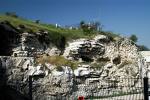
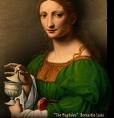
33 On Apr. 3 (Fri.) (3:00 p.m.) there is a lunar eclipse; astronomers Colin J. Humphreys and W.G. Waddington claim that Jesus Christ was crucified on this day - could it be, no? Liar, Lunatic or Lord? The entire future of the Western and half of the Eastern world is changed by what allegedly happens to one man in a backwater of the Roman Empire about this time? This job's a dead end; you can do better girlfriend? Jesus Christ starts the year E of the Jordan River (John 10:40-42), preaching in Perea and other cities on a slow walk toward Jerusalem, recruiting his first 12 Disciples (Apostles) (Mt. 4:18-22, Mk. 1:16-20, Lk. 5-11) by the Sea of Galilee, starting with fisherman (St.) Andrew the Apostle (First-Called) (5-62) and his brother fisherman Simon Peter the Apostle (firt pope), dubbing them "fishers of men" (Matt. 4:18-22) (Mark 1:16-20) (Luke 5:1-11) (John 1:35-42), (St.) James the Great(er), son of Zebedee, John of Patmos the Apostle (Evangelist) (Elder) (6-100), "the Beloved Disciple" (youngest) (brother of James), Philip (-80) (John 1:43), Bartholomew, Matthew, the tax collector (Mt. 9:9-13, Mk. 2:13-17, Lk. 5:27-28), Doubting Thomas (Didymus) (Lat. "twin") (-72), James the Less(er)/Younger/Little, son of Alphaeus, Simon the Zealot (Canaanite) (Cananaean), Judas (Jude) Thaddaeus (Lebbaeus), son of James (Lk. 6:16) (Acts 1:13), and Judas Iscariot, stopping in Bethany to raise Lazarus from the dead (John 11:1-46), then after skirting Jerusalem he goes through Samaria, back through Perea, where he foretells his death and resurrection for a 3rd time (Matt. 20:17-19, Mk. 10:32-34, Luke 18:31-34), passes through Jericho, healing two blind men, then visits Zacchaeus (Matt. 20:29-34, Mt. 10:46-52, Luke 18:35-19:28); six days before Passover he arrives in Bethany (John 11:55-12:1), has a feast at the house of Simon the Leper, is annointed by Mary of Bethany (Matt. 26:6-13, Mt. 14:3-9, John 12:2-11), then on Nisan 9 (Palm Sunday) finally makes his Triumphal Entry into Jerusalem (Matt. 21:1-11, 14-17; Mk. 11:1-11, Luke 19:29-44, John 12:12-19), cursing a barren fig tree on Nisan 10 (Matt. 21:18-19, Mk. 11:12-17, Luke 19:45-46); on Nisan 11 the barren fig tree is found withered (Matt. 21:19-22, Mk. 11:20-25), and he has fun in the Temple of Jerusalem, overturning the moneychanger's tables, then retreating to the Mount of Olives; on Nisan 12 the Jewish leaders plot his death, and cut a deal with traitor disciple Judas (Yehuda) Iscariot, the one who keeps the money bag; on Nisan 14 (Thur.) (Mt. 26:17-30) (Mk. 14:12-26) (Lk. 22:7-39) (John 13:1-17:26) (Ex. 12:18) Jesus and his disciples celebrate the Last Supper, held in the Cenacle (Upper Room), where Jesus predicts his betrayal by you know who Judas Iscariot and that you know who Peter will deny knowing him 3x before the cock crows (sunrise), instituting the Eucharist; it was not a Passover meal but a run-of-the-meal Jewish meal?; on Nisan 15 (Fri.) (First Passover) after praying in the Garden of Gethsemane (Aramaic "olive oil press") at the foot of the Mount of Olives, where "his sweat was as it were great drops of blood falling down to the ground" (Luke 22:43-4), Jesus of Nazareth (Christ) (b. -7 to -2?) (clean shaven or bearded?) (single or married?) (does he or doesn't he?) (swings both ways or what?) is betrayed with a kiss by his disciple Judas Iscariot for 30 pieces of silver (the kiss is to tell him apart from disciple James the Lesser, brother of Matthew, who allegedly looks a lot like Jesus but isn't as good a kisser?), and taken to the Jewish high priests, who can't stand his blasphemous jive honky mouth and spit on him and slap the faker, then hand him over the Romans, talking Pontius Pilate into having him flagrantly scourged with flagrums (flagri) (2-3 thongs with bell-shaped thingies to cause pain?); then noting that Tiberius extended the law of laesa majestas (injured majesty) to include mere libelous words against the emperor under the definition of sedition, Pontius Pilate legally orders his execution (John 19:12-16), and after Simon of Cyrene (a Greek city in the Roman province of Cyrenaica, with a pop. of 100K Judean Jews, meaning he wasn't necessary black?) helps him carry his cross (Mk. 15:21) on the Via Dolorosa (Lat. "sorrowful way"), Jesus is crucified on a cross (hung on a stake?) at Cavalry Hill (Golgotha) (Lat. "calvariae locus" = Gr. "kranion topos" = Aramaic "Golgotha" = "place of the skull") outside Jerusalem on Passover, Nisan 14 (Fri.), where he gives up the ghost about 3 p.m. as the sky grows dark?; last words (KJV): "It is finished" (Gr. "Tetelestoi") (John 19:30) (same words said by the high priest after the Passover lambs are sacrificed); "My God, my God, why hast thou forsaken me?" (Matt. 27:46, Mark 15:34); "Father, into thy hands I commend my spirit" (Luke 23:46); wealthy Jew (metals trade, dealing with Cornwall in Britain?) and secret Christian (member of the Sanhedrin) Joseph of Arimathea (owner of the Garden of Gethsemane?) requests his body from Pilate and places it in his own newly-dug tomb (Matt. 27:57-60), although by Roman law crucified criminals can't be buried but are to be left hanging for the birds and beasts to feast on; too bad (too good?), early on the morning of Nisan 16 (Sun.) his tomb is found empty, and his true believers begin seeing things, claiming to see him appear and disappear, not only to them, to everybody, since he immediately proceeds to give the absolute proof that he's the Son of God and that his conviction by human courts was overturned by the Supreme Court of Heaven to silence all skeptics by making his second triumphal entry into Jerusalem in front of multitudes, where he walks up to Pilate and kisses him on the pucker, er, he skips that and leaves the 3-D holographic Burial Shroud of Christ, which becomes hard to prove exists for the next millennium or more, but wows scientists in the 20th cent.?; meanwhile after Jesus II kind of sneaks around and only visits his own for awhile (if only he had gone back to Big J, imagine the high priest's face, er, maybe it's all a test for them stiff-necked Jews, who would have just sent him back to the Cross again and again and again, shut your mouth?), he gives his disciples the Great Commission (Mt. 28:18-20), then decides a wife and kids ain't worth it and retires from the flesh biz without having to be bitch-slapped and crooseefied again, and disappears into the sky on the 40th day of his new life (Ziv or Iyyar 25) at the Mount of Olives (Olivet) near Bethany (2 mi. ESE of Jerusalem) (home of his friend Lazarus and his sisters Martha and Mary) (Acts 1:9-12); meanwhile, wasting no time, the first crop of 120 Christians (Gk. "little Christs") and Jewish proselytes (from around the Roman empire?) gather in Jerusalem on Pentecost (Festival of Harvest) (Festival of Weeks) (Day of the First Ripe Fruits), 50 days after the Passover (Sivan 6), where they receive the "Holy Spirit", speak in tongues and launch the World Religion of Christi[ns]anity (Acts 1:13-15), the belief that he rose from da dead and only his shed blood is truly lifesaving, plus plus plus take a bath and sign right here and you're saved, don't ask for a corpse or a skeleton he flew the coop and is looking back at ya from Heaven (thank god, I'm so sick of New York?); meanwhile true-moneygrubbing-Jew traitor apostle Judas Iscariot buys the Aceldama (Akeldama) (Aramaic "hagel dema" = field of blood) (Matt. 27:7) S of Jerusalem with his 30 pieces of silver (which he returns?), then does a swan dive, "falling headlong, burst open in the middle and all his bowels gushed out" - Acts 1:18); seven qualified men are appointed as food distributors for the Christian Jewish congregation, the only non-Jew being Nicolaus of Antioch (Acts 6:1-6); the 11 remaining original apostles go out and preach the good news, and all are martyred (Stephen is stoned, Matthew is slain in Ethiopia, Mark is dragged through the streets until dead, Luke is hanged, Peter and Simeon are crucified, Andrew the First-Called (5-62) is crucified, Philip is crucified and stoned, James is beheaded, Barholomew is flayed alive, Thomas is pierced with lances, James the Less is thrown from the Temple of Jerusalem and beaten to death, Jude is shot to death with arrows, Matthias is stoned to death, Paul is beheaded) except John, who ends up in W Asia Minor and outlives the rest, reaching 100?; Peter goes to Gaul (Chartres), Britain (Cornhill), and Rome?; Matthew goes to Ethiopia and resides with an official converted by Philip?; Philip acompanies Lazarus, Mary Magdalene, Joseph of Arimathea et al. on a preaching mission to Gaul, with Lazarus and Mary remaining in Marseille, after which Philip sends Joseph of Arimathea with 12 disciples to Christianize Britain, founding a monastery at Glastonbury, and bringing the Holy Grail with him?; Matthias (one of the Seventy) goes to Armenia?; Jude Thaddaeus goes to Edessa and cures King Abigar with the Shroud (Mandylion)?; Simon and Jude go to Mesopotamia?; Andrew goes to Byzantium?; red-haired Mary Magdalene (of Magdala), Christ's wife, carrying his child and meant to run her hubby church is overthrown in a coup led by woman-hating, er, Peter, and flees to France with her red-haired daughter Sarah, carrying the sang real, the royal blood of Christ, and spawning the legend of the San Greal, or Holy Grail (Sang Real, or Royal Blood)? ("Witness the greatest coverup in history" - Dan Brown?) - ready or not, there I go?; Jehovah prepares to quit sticking with the home team despite his long-time partiality, divorce his wife the Chosen People, take away their driver's licenses, make the mean nasty Romans destroy his former temple and priesthood, and get them dispersed out of their former land of milk and honey, where they will be forced to fend for themselves in a sea of goyim, but not right away, giving them 40 years to repent for what they did to his only begotten Son? The Jewish Temple will then no longer be needed, as the body of each believer is a temple, and the only sacrifice needed is the blood of the Lamb, s orry rabbi, kicks are for Trids?; yes, as a just God he must give them the customary 40, but funny how the first Gospels spring up after the Temple is destroyed, forever giving skeptics a platform to claim that Jeezy was all made-up afterwards when all the possible witnesses is kaput, and all the mean persecuting Jews iz taken care of, like magic, er, that would make it true, check back in 2,000+ years?
34 On Apr. 23 (Fri.) (St. George's Day) Jesus Christ is crucified, according to English big brain scientist Sir Isaac Newton (1643-1727). Herod I the Great's son Philip the Tetrarch dies childless, and Tiberius orders his realms to be added to the province of Syria. Jesus Christ spends the next 16 years traveling with his mother Mary through Turkey, Persia, and W Europe (England?), finally settling in Kashmir, where he teaches and becomes a revered saint, dying at age 121 and buried in a tomb, according to Mirza Ghulami Ahmad (1835-1908).


In 36 C.E. armed Samaritans gather on Mount Gerizim in hopes of uncovering ancient buried treasures of Moses, and Pilate sends troops, which kill a number of them, causing them to complain to Pilate's boss Syrian gov. Lucius Vitellius the Elder, who, seeking to secure Jewish goodwill removes Pilate and sends him to Rome to answer to the emperor on charges of rapacity and cruelty; Tiberius dies next year before Pilate arrives, and the latter passes out of history into the realm of speculation, some claiming he becomes a Christian (Ethiopian Christians make him a saint), or committed suicide; Marcellus becomes Roman prefect of Judea (until 37); Vitellius appoints a new independent high priest, who martyrs (St.) Stephen (Gr. "wreath or crown") (Acts 7:58) (the first Christian martyr), and sends Pharisee Saul (Heb. "asked of God") of Tarsus (5-65) to Damascus to arrest some pesky Christians (Acts 9:4), which ends in the latter's miraculous vision of Jesus Christ on the road from Jerusalem to Damascus and conversion and reinvention as the artist formerly known as Apostle St. Paul (Gr. "small").
In 39 C.E. three years after his conversion, Apostle Paul makes his first visit to Jerusalem (Gal. 1:18).

In 44 C.E. James, the brother of John is executed by Judean king Herod Agrippa I (b. -11) at Passover (Acts 12:1,2); he then arrests Peter but somehow he gets loose (Acts 12:3-19); Herod Agrippa I wears a silver suit in Caesarea, is called a god by the audience from Tyre and Sidon, gets a bellyache from Jehovah's angel and dies? (Acts 12:20-23); his terrorities become a Roman province, since his 17-y.-o. Roman-reared son Herod (Marcus Julius) Agrippa II (27-100) is thought too young to rule, and his daughters Bernice, Drusilla (wife of Gov. Felix), and Mariamme (Mariamne) III are out of the question; Gaius (Caius) Cuspius Fadus becomes the first of a line of procurators (civilian financial governors, mainly of the equestrian class) of the Roman province of Judea (Judaea) lasting to 66. Theudas (d. 46) (Acts 5:36) organizes a revolt against Rome in Judea (ends -44).
In 46 C.E. a famine in Judea causes Messiah-wannabe Theudas (d. 46) to get a majority of Judean peasants to take their possessions and follow him to the Jordan River, where he promises to part the waters and lead them across; meanwhile Roman gov. Fadus sends a cavalry unit to kick his butt, and he must have failed to do a Moses Trick since his head is put on display in Jerusalem and his 400 disciples scattered?
In 47-48 C.E. Apostle Paul undertakes his First Missionary Journey under the leadership of Barnabas and attended by John Mark, starting at the seaport of Seleucia in Antioch and sailing to Salamis on the E coast of Cyprus, then preaching their way to Paphos on the W coast (allegedly founded by Cinyras, daughter of Paphos, daughter of Pygmalion and Galatea), where Paul blinds sorcerer Elymas and converts proconsul Sergius Paulus (Acts 13:4-12; 13:1-14:28).
In 48 C.E. there are 5,984,071 Roman citizens, according to the Annals of Tacitus (11.25); Jewish pop. of Israel: 1.5M-2.5M, plus 300K non-Jews.
In 48 C.E. Apostle Paul and co. sail from Paphos, Cyprus to Perga in Pamphylia (S Asia Minor), John Mark returning to Jerusalem; Paul and Barnabas head N to Antioch in Pisidia, but the pesky Jews get them tossed out (Acts 13:13-50); they go to Iconium, where the Jews do it again, and they flee to Lystra in Lycaonia, where Paul heals a lame man and the crowd takes them for gods, only to have Jews from Antioch and Iconium shadow them and turn the crowds against Paul, getting him lapidated, er, stoned and dragged outside the city, taken for dead, but he is just faking and goes to Lystra, then Derbe, back to Lystra, then Iconium, Antioch, and Perga, finally sailing from Attalia to Syrian Antioch (Acts 13:51-14:28).
In 48 C.E. the alleged date of death of Mary, mother of Jesus (b. -15) in Jerusalem; her body is conveniently "assumed" into heaven, making a search for her remains pointless?
In 49 C.E. Emperor Claudius expels Jewish Septuagint missionaries from Rome.
Let me introduce you to P; P hates his job? In 49 C.E. Apostle Paul, Titus et al. meet with Jewish Christian elders in Jerusalem to discuss what Jewish laws, if any (esp. circumcision) must be obeyed by gentile converts, and they decide that they must only remain free of idolatry, consumption of blood, and sexual immorality (Gal. 2:1-10, Acts 15:1-29), becoming the first Canon Law?; they send Silas to Antioch, and give Paul and Barnabas the mission of preaching to the now-PC uncircumcised (Gal. 2:1-9); Peter chickens out trying to preach to gentiles in Syrian Antioch after Jews from Jerusalem arrive, causing Paul to publicly censure him (Ga. 2:11-14).
In the 50s C.E. In this decade Apostle Paul writes the Epistle to the Galatians (a region containing several churches, not just one).
In 50 C.E. a Jewish riot in Jerusalem results in 20K-30K killed; Claudius expels (all the?) Jews from Rome; civil and ethnic conflicts rock Judea from now on until the end (66-70).
In 50 C.E. is the traditional date of the arrival of St. Thomas the Apostle (-72) (an Indian, always portrayed as dark?) in Kerala, India after establishing Christian churches in Mesopotamia and Persia, founding the St. Thomas (Syrian) Christians of India; the Assyrians, who had scattered across the Middle East over the last 6 cents. embrace Christianity, and found the Ancient Church of the East in Iraq.
In 50 C.E. Apostle Paul splits with Barnabas over taking quitter John Mark back, and takes off for Syria with Silas (Silvanus) on his Second Missionary Journey (ends 52), traveling through Syria into Asia Minor, stopping at Lystra to pick up young half-Jew Timothy, hedging his bets by personally circumcising him so Timmy could preach to Jews without pissing them off (Acts 15:36-16:3); after a night vision at Troas (on the Aegean Sea), "Step over into Macedonia and help us" (Acts 16:8-10), Paul joins Luke the physician for a trip to Macedonia, converting Lydia and her household at Philippi (his first European city), but his exorcism of a girl gets him and Silas jailed, and a fortuitous earthquake frees him, wowing the jailer, who converts to Christianity along with his family, and Paul uses his Roman citizenship to compel the civil magistrates to personally free him and Silas from priz; they then go to Amphipolis, Apollonia and Thessalonia, but jealous Jews start a riot, and Paul and Silas flee to Beroea in Macedonia (40 mi. WSW of Thessalonica), then preach in the Jewish synagogue and found a Christian community (Acts 17:10-12), but Jews shadowing them from Thessalonica get them \ kicked out yet again (Acts 16:8-17:14), this time to Athens, where he takes on the Greek Epicurean and Stoic philosophers and their Unknown God (in case they missed one with their other temples, to cover all bases) in the Areopagus, converting Dionysius the Areopagite et al. (Acts 17:15-34); Greek writings bearing the name of Dionysius the Areopagite are later produced by anon., laying the foundation for the mystical theology of the Church; about this time Phoebe, a deaconess sent by St. Paul to Rome becomes the first known nurse (Romans 16:1).
Big technological breakthrough for New Testament makers? By 50 C.E. many books are now assembled as cool, easy-to-hop-around-in codices (books with pages), not cumbersome scrolls - the ancient version of email makes Christianity a winner?
About 50 C.E. Apostle Paul writes the Two Epistles to the Thessalonians (50-51) (his earliest epistle?), and the Epistle to the Galatians (50-52) (a region containing several churches, not just one).
In 51 C.E. Apostle Paul goes to the wild port city of Corinth, "best little whorehouse in the Ancient Roman World", known for its temple of Apollo at sea level and its temple of Aphrodite on the hilltop Acrocorinth (acropolis), filled with "Corinthian women" (hos), as well as its 3.5-mi. Diolkos road for dry-hauling ships over the Isthmus of Corinth to avoid the treacherous 200-mi. voyage around the stormy Peloponnesus, which causes the town to be regularly filled with horny sailors looking for a good time from the thriving working girls; he stays for 1.5 years, first preaching in the Hebrew synagogue (unearthed in 1898) and making converts among Jews and pagans, preaching how the human body is the temple of the human spirit and sexual immorality is bad, and receiving a vision that Corinth contains many righteously disposed people (Acts 18:9-11) - which explains why Christianity attracts worn-out hos and johns who have turned into sex-hating prudes?
In 52 C.E. Syrian historian Thallus writes that in Judea on the Passover in 32 there was an eclipse, just like it says in the Gospels?
In 52 C.E. Apostle Paul shacks up with Jewish couple Aquila and Priscilla (who had been expelled with other Jews from Rome by Claudius in 50) in Corinth, and works part time as a tentmaker (maker of prayer shawls?), writing the Two Epistles to the Thessalonians (50-51) (his earliest epistles?), meanwhile the Jews get him charged before the court (bema) of proconsul Gallio, but he dismisses the charges because he is accused of violating Jewish not Roman law (Acts 18:1-17); in Romans 16:23 Paul mentions city treasurer Erastus (Lat. "beloved"), who is who found mentioned on a pavement there by T.L. Shear in 1929; Apostle Paul then sails with Aquila and Priscilla from the E port of Cenchreae to Ephesus, Caesarea, back and forth to Jerusalem, then to Syrian Antioch (Acts 18:18-22).
In 53 C.E. Apostle Paul begins his Third Missionary Journey (ends 56), visiting Ephesus for 2.5 years, and dispatching Titus to Corinth to check up on Apollos (Acts 18:24-28, 19:1).

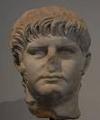

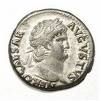
On Oct. 13, 54 C.E. emperor (since Jan. 24, 41) Claudius (b. -10) dies of mushroom poisoning by his wife Agrippina Minor, and her Hellenophile hooligan son Lucius Domitius Ahenobarbus, who changed his name in 50 to Nero (37-68) becomes Roman emperor #5 (last of the Caesars) (until June 9, 68) after mommy gets Praetorian Prefect Sextus Afranius Burrus (1-62) to present him to his cohorts and declare him emperor instead of Claudius' son Britannicus, getting the Senate and provinces to accept the choice; Burrus becomes Nero's advisor, along with philosopher Seneca Minor, beginning the Five Golden Years of Nero (Quinquennium Neronis), in which Nero takes advice and rules with moderation, lowering taxes and govt. regulation and giving the Romans more bread and circuses while cultivating his love for poetry, music, painting, sculpture, and horseracing and snubbing the army, becoming the first emperor to never visit them; these years are called by Trajan "the best of the imperial era"; Nero renames Caesarea Philippi to Neronias, and gives Tiberias and Taricheae in Galilee, and Julias in Perea to pro-Flavian puppet Herod Agrippa II, who now rules the lands of his great-grandfather Herod I the Great from fabled Jerusalem without title, carrying on an incestuous relationship with his sister Bernice, former queen of Cilicia, while trying to get the dazed Jews over the idea of Jewish independence?
In 55 C.E. Apostle Paul begins his Fourth Missionary Journey (Acts 18:23-21:16) (ends 58), spending two years in the Roman province of Asia (Acts 19:10), considerable time in Troas and Macedonia (2 Cor. 1:15-23, 2:2-13), and 3 mo. in Greece (Acts 20:2-3).
In 55 C.E. Apostle Paul writes his First Epistle to the Corinthians in Ephesus, remaining until Pentecost, when silversmith Demetrius gets pissed-off at him for ruining his business in pagan trinkets for the worshipers of Artemis (Diana), and starts a riot against him (Acts ch. 19), causing Paul to head for Macedonia, then Troas, where he fails to hook up with Titus because the latter had been sent to Corinth to collect funds for the brothers in Judea, then heads to Macedonia, where he is joined by Titus with the Corinthians' reaction to his first epistle to them (2 Cor. 2:12-13, 7:5-7), causing him to write his Second Epistle to the Corinthians, dispatching Titus to Corinth with it, a few mo. later going there himself.
In the days before there was a pope, or even a New Testament, men were men and maudlin women like Mary Magdalene didn't found religions? In 56 C.E. Apostle Paul returns from Macedonia to Corinth, writes his Epistle to the Romans, then takes off, giving talks at Troas and raising Eutychus from the dead, then visits Miletus to review his ministry in Asia with the Ephesus congregation (Acts 19:1-20:4, Romans 15:25-26; 2 Cor. 2:12-13; 7:57); he then visits the learned city of Mitylene (principal city of Lesbos) on the way to Jerusalem from Assos on Asia Minor, stopping after that at Chios (Acts 20:14-15) (the only place where mastic sap can be obtained); he detours from Caesarea to Cyprus to visit "an early disciple" named Mnason (Acts 21:15-17); along the way he is warned by Christians that the Jews are waiting for him in Jerusalem (Acts 21:4-14; Acts 20:22-23), and sure enough, he is mobbed, but rescued by Roman soldiers (Acts 21:26-33), mobbed again as he preaches to Jews and tells them the big no-no that he also preaches to gentiles (Acts 21:34-22:22), escapes scourging by claiming the rights of Roman citizenship, is tried before the 71-member Jewish Sanhedrin (Beth Din) (whose members must be priests, Levites, or Israelites whose daughters are permitted to marry priests) under High Priest Ananias, uses the opportunity to put the pro-resurrection liberal (mainly commoners) Pharisees (his party) against the anti-resurrection conservative (mainly priestly nobles) Sadducees, gets extradited to Caesarea, brought before procurator Felix, and accused by Ananias, Jewish elders and the orator Tertullus of sedition and profaning the temple without evidence; but instead of dismissing the charges Felix orders him held in custody (hoping for a bribe) for two years, as long as he remains in office (Acts 23:12-27:1; 24:27). Greek physician St. Luke writes the Gospel of Luke (56-58?) (80?) (90?) for a high-ranking Roman official in Caesarea, Roman capital of Palestine, after consulting many writings on Jesus, starting out "Many have undertaken to set down an orderly account of the events that have been fulfilled among us, just as they were handed on to us by those whom from the beginning were eyewitnesses and servants of the word"; the mysterious hypothetical Q (Quelle) (Source) Document (written about 80?) was consulted?

In 58 C.E. Judean gov. Marcus Antonius Felix crushes a Jewish revolt in Caesarea, and has the Roman army hunt down Jerusalem robbers (Essenes?) in their desert hidehout; too bad, he is accused of using a dispute between the Jews and Syrians as a pretext to massacre and plunder them, but escapes punishment after the intercession of his brother Pallas, who has pull with Nero; (next year?) Porcius Festus becomes procurator of Judea in Caesarea (until 62) (just what the Jews need, a feaster on pork?); the Jews renew their charges against Apostle Paul, who is brought before Festus, who tries to induce him to return to Jerusalem for trial, but he decides to appeal to Caesar, telling him "Civis Romanus sum" (I am a Roman citizen), a native of Tarsus ("no mean city") (Acts 25:12), and he is brought before Herod Agrippa II, whom he nearly persuades to become a Christian (Acts 26) (thus besting his savior Jesus?), concluding with "Why is it thought incredible by any of you that God raises the dead?" (Acts 26:8) (just in time to stop Jehovah's judgment on the Jews); Agrippa then sends Paul to Rome in chains so that the big cheese himself can judge him (Acts 23:12-27:1).
In 59 C.E. Apostle Paul's prisoner ship gets caught in a gregali (northeasterly storm in the Mediterranean) and is shipwrecked on one of the five islands of Malta 60 mi. S of Sicily, and he spends the winter there before being brought to Rome, where he is allowed to live under house arrest under soldier guard, and soon meets with the principal men of the Jews, converting only a portion, then continuing to preach to visitors for two years (Acts 27:2-28:31); Epaphroditus is sent by the Christians (Chrestians?) of Philippi with a gift for Paul, working so hard that "he was ill and almost died for the work of Chrest" before Paul sends him back with a letter to quiet rumors of his serious illlness (Philippians 2:25-30, 4:18); Domitian believed that he assassinated Nero? - and I think it's going to be a long, long time until Nero brings me around again to find I'm not the man they think I am at home, no no no?
In 60 C.E. in Rome St. Paul writes the first two (of three) Deutero-Pauline Epistles (with II Thessalonians), Epistle to the Ephesians, and Epistle to the Colossians (w/Timothy) (to Epaphras, who founded the Christian church in Colossae, and ran up against Gnostics?); Epistle to the Philippians (w/Timothy); Epistle to Philemon (w/Timothy) (60-61). Jerusalem-born St. Mark (translator for St. Peter?) writes The Gospel of Mark (60-65) (66-74?) in Rome, becoming the earliest surviving Gospel, from which Matthew and Luke copy?; the earliest known mss. stop at 16:8; the three become known as the Synoptic ("with one eye") Gospels, although anybody reading them has to shut both eyes at the numerous Gospel Discrepancies and Contradictions, some of which can be waved away by considering them all true, others of which can't.
In 61 C.E. Nero clears and releases Apostle Paul, who begins his Fourth Missionary Journey (continues his third?), going with Timothy and Titus, leaving Timothy at Ephesus and Titus on Crete, writing letters to them from Macedonia (1 Tim. 1:3; Titus 1:5); did he visit Spain before ending up back in Rome in chains by 65 (Romans 15:24)? Somebody (Paul? Barnabas? Clement of Rome? Luke the Evangelist? Apollos? Priscilla?) writes Epistle to the Hebrews (late 63 or early 64?), introducing Christ as the high priest of the order of Melchizedek; "Men of old have handed it down as Paul's, but who wrote the Epistle God only knows" (Origen); Apostle Paul writes two of his three pastoral epistles (along with II Timothy), First Epistle to Timothy, Epistle to Titus (61-64). Apostle Luke writes Acts of the Apostles (60-62) (70-80?).
In 62 C.E. the traditional year of death (beheaded?) of Christianity founder Apostle (St.) Paul (b. 5) in Rome early in the year after being imprisoned in the Mamertine Dungeon, leaving the thirteen Pauline Epistles, founding Christianity as an ultimate Weltanschauung.
In 62 C.E. Jesus the Rustic proclaims "a voice against Jerusalem" (Josephus). Women gladiators are organized by Nero - to forestall osteoporosis, or because the Celtic women have become Million Dollar Babies? St. James the Less (Just) (-62), bishop of Jerusalem (son of Alphaeus or Cleophas and the Virgin Mary's sister) writes The Epistle of James by this year, urging Jewish Christians to suffer patiently; Martin Luther (1483-1546) calls it a "right strawy" epistle, claiming that it does not preach Christ sufficiently.
In 62 C.E. Jewish disciple #1 of Jesus St. Andrew (Andreas) the Apostle (the First-Called) (b. 5) dies in in Patras, Achaia; crucified on the X-shaped St. Andrew's Cross (Crux Decussata) (Saltire) at his own request after he deems himself unworthy to be crucified on a Latin cross like Jesus; the patriarch of Constantinople claims to be Andrew's apostolic successor, vs. his brother Peter Simon for the bishop of Rome (pope).
In 63 C.E. the Temple of Jerusalem is finally completed, and unemployed artisans become a problem, causing Herod Agrippa II to set them to work paving the city with white stone; the Jews erect a wall blocking Agrippa's view of the temple courtyard from his palace, and on appeal of the Jews to Nero it is allowed to remain.
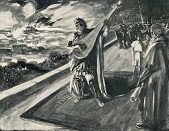
You keep saying you got something for me, something they call love? On July 18/19, 64 C.E. (Fri.-Sat.) (night) (the day before the dog star Sirius rises) the Great Fire of Rome begins (ends July 24), burning the city to the ground, letting Nero build a magnificent new city as a memorial to himself, just like he wanted; since the violin isn't invented until the 16th cent. C.E., he doesn't stand on top of a tower and fiddle, or sing "The Fall of Troy" while dressed in a costume and playing a lyre, but according to Tacitus is 50 mi. away at his villa in his birthplace of Antium, and rushes back to try and stop the blaze? (aw shucks, forgot to bring some water?) (admired the spectacle from a distance while reciting verses about the burning of Troy?) (not responsible, but glad it happened?); "Of the fourteen regions or quarters into which Rome was divided, four only subsisted entire, three were levelled with the ground, and the remaining seven, which had experienced the fury of the flames, displayed a melancholy prospect of ruin and desolation" - Gibbon, Ch. 16; after being himself accused of doing it, pudgy mother and wife killer Nero blames it on the pernicious new underground sect of Christians (actually Chrestians?) (suspected of witchcraft), and begins the vicious First (Neronian) Persecution of the Christians; alleged firestarter Apostle St. Paul is arrested (in Nicopolis of Epirus?) and sent to Rome for execution; "But all human efforts, all the lavish gifts of the emperor, and the propitiations of the gods, did not banish the sinister belief that the conflagration was the result of an order [by Nero]. Consequently, to get rid of the report, Nero fastened the guilt and inflicted the most exquisite tortures on a class hated for their abominations, called Chrestians by the populace. Chrestus, from whom the name had its origin, suffered the extreme penalty during the reign of Tiberius at the hands of one of our procurators, Pontius Pilatus, and a most mischievous superstition, thus checked for the moment, again broke out not only in Judæa, the first source of the evil, but even in Rome, where all things hideous and shameful from every part of the world find their center and become popular. Accordingly, an arrest was first made of all who pleaded guilty; then, upon their information, an immense multitude was convicted, not so much of the crime of firing the city, as of hatred against mankind. Mockery of every sort was added to their deaths. Covered with the skins of beasts, they were torn by dogs and perished, or were nailed to crosses, or were doomed to the flames and burnt, to serve as a nightly illumination, when daylight had expired. Nero offered his gardens for the spectacle, and was exhibiting a show in the circus, while he mingled with the people in the dress of a charioteer or stood aloft on a car. Hence, even for criminals who deserved extreme and exemplary punishment, there arose a feeling of compassion; for it was not, as it seemed, for the public good, but to glut one man's cruelty, that they were being destroyed. - Tacitus, Annals, 15.44.
In 64 C.E. the traditional date of the arrival of the first Christians in China.
In 64 C.E. St. Peter writes the Second Epistle of Peter.
Early in 65 C.E. Christian apostle St. Paul (b. 5) is executed in Rome as part of Nero's justice for the Great Fire of 64; dies after founding Christianity, based on alleged visions of Jesus Christ, claiming that he was predicted in the Jewish Old Testament writings of Isaiah et al., but seemingly never having seen any Gospels?; before he dies he writes The Second Epistle to Timothy.
In 65 C.E. Jewish and Syrian residents of Caesaria riot, causing Roman procurator (64-66) Gessius Florus to commandeer money from the Jerusalem Temple treasury to combat it; Herod Agrippa II returns from Alexandria to Jerusalem to deliver a speech to dissuade the populace from revolt, but fails.
In 65 C.E. Jude, "brother of James" (half-brother of Jesus?) writes The Epistle of Jude (65-90?).
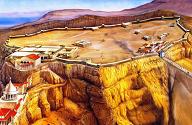
In spring 66 C.E. Roman procurator (64-66) Gessius Florus seizes 17 talents of back taxes from the Jewish Second Temple, then some joker Roman soldier moons the Jews who are preparing to celebrate the Feast of Unleavened Bread, another tears up the Torah and throws it into the fire, and/or another joke empties a chamberpot outside a synagogue in Judea, defiling the holy ground, all causing a riot, which escalates into the 6.66, er, 8-year First Jewish-Roman War (Revolt) (ends 74), beginning the Jewish Roman Wars (ends 136) after the fanatical Jewish Sicarii (Lat. "dagger men") (Acts 21:38) swarm into Jerusalem and slaughter the Roman garrison, then declare Judea independent of Rome, halting the hated Temple sacrifices to the Roman emperor; smart-pretty Herod Agrippa II sides with Rome; the Sicarii wipe out the Roman garrison at the Dead Sea fortress of Masada (Heb. "fortress"); in early Nov. Gaius Cestius Gallus (-67), Roman legatus Augusti of Syria (since 63) marches 30K troops S from Ptolemais on the coast W of the Sea of Galilee, conquering Beit She'arim in the Jezreel Valley (seat of the Great Sanhedrin), and arriving in Jerusalem during the Festival of Booths (Oct. 22-28), camping on Mount Scopus before being attacked by the Jews when they come within 50 furlongs, then pushing them back into the city, after which the Romans enter the city on Nov. 5, undermining the temple wall in six days, then suddenly (with no apparent reason?) withdrawing toward the coast and resting in Emmaus, with the Zealots ("as though they were zealous in the cause of virtue and not for vice in its basest and most extravagant form" - Josephus), led by Jewish priest (one of the guardians of the Temple treasure) Eleazar ben Simon in hot pursuit for seven days, defeating and almost annihilating Roman Legio XII Fulminata at Beth-horon (Beit-horon), killing 5K+ Romans, then surrounding the rest of the army in a ravine and destroying most of its men and material before the remnant escapes to Antioch, after which Gallus dies early next year, and is succeeded by Gaius Licinius Mucianus (until 69); the happy Jews, believing that they have won their independence coin silver shekels with the inscription "Jerusalem the Holy" and "The Freedom of Jerusalem", with this year considered as Year 1 (the original 666?); before returning to Jerusalem the Zealots force the remaining Jewish pop. to join their revolt, but not before the pesky Christians take Jesus' advice: "When you catch sight of the disgusting thing standing in a holy place, then let those in Judea begin fleeing to the mountains" (Matt. 24:15-16, Mark 13:14-19, Luke 21:20-24), and flee E to Pella in the mountains across the Jordan River; after Zealot leader Eleazar ben Simon allies with priest Zacharias (son of Amphikalles) against peace-lover high priest Ananias, the latter is murdered by a Jewish mob while hiding out in an aqueduct - did Jeezy really forsee the wars in Gaul (39-40), N Africa (41), Britain (43, 60), and Armenia (58-62), the earthquakes in Rome (54), Pompeii (62), Asia Minor (63, 62) and Crete (62), the famines in Rome, Greece, and Egypt (42) and Judea (46), the pestilences in Babylonia (40) and Rome (60, 65), and the false prophets in Judea (c. 56), and therefore the Good News (Gospels) (Matt. ch. 24, Mark ch. 13, Luke ch. 21) merely report his actual words, or did they make it all up after it happened and put the words in his mouth to make him seem like ickle me, pickle me, tickle me too, you know what in a flying shoe, I wish I knew? Call me Mister Nero?


In 67 C.E. Jewish Christian apostle St. Peter (Gr. "rock") (Simon) (Simeon) (b. 1) (first pope?) is executed on Vatican Hill in Rome, crucified upside-down at his request since he considers himself unworthy to be crucified rightside-up like Jesus.
Even at this early date, there are dorks and hippies running around in the Jewish part of the Roman empire? In 68 C.E. rebel Jerusalem is rocked by rival factions, causing the city grain reserves to be destroyed, the area surrounding the temple to be leveled, and 20K to be killed, causing Vespasian to delay his advance to the city, saying "God acts as a Roman general better than I do; our enemies are destroying one another with their own hands"; meanwhile the Mediterranean seaport of Jaffa (Joppa) 50 mi. NW of Jerusalem is destroyed by the Romans - after St. Peter resurrected Dorcas (Tabitha) ("Gazelle") (only known female disciple) there in 36 C.E. (Acts 9:36-43)?
The mystery of the century? In 68 C.E. the 4K-member Qumran (Essene) community (Khirbet Qumran) (known for wearing white robes and working as healers) is destroyed by the Roman 10th Legion; as they approach, the monks hide the 1K the Dead Sea Scrolls in caves around the Dead Sea (discovered in 1947), incl. their Manual of Discipline, which shows that the Essene brothers lived austere lives of poontang-free purity under a 12-man leadership, followed the Teacher of Righteousness, and practiced baptism as they followed "The Way" in their struggle between the forces of Light and Darkness - were John the Baptist and/or Jesus and/or the true founders of Christianity really into the Essene Scene, and it's a coverup?
In 68 C.E. after the death of St. Peter, St. Mark allegedly travels to Alexandria, founding the Catechetical School of Alexandria and writing the Secret Gospel of Mark, containing "a more spiritual Gospel for the use of those who were being perfected", reserved for "those who are being initiated into the great mysteries", whose existence is revealed in 1958 by Morton Smith of Columbia U., along with a Fragment of the Gospel of Mark About the Raising of Lazarus (which is otherwise only found in the Gospel of John) that was deliberately suppressed by Bishop Clement of Alexandria to fight the senses-satiating Gnostic Carpocratians, founded by Carpocrates of Alexandria in the early 2nd cent.; it incl. the homoerotic text: "And after six days, Jesus told him what to do, and in the evening the youth came to him wearing a linen cloth over his naked body. And he remained with him that night, for Jesus taught him the mystery of the kingdom of God. And thence arising, he returned to the other side of the Jordan."
In 69 C.E. a big fire on the Capitoline Hill in Rome caused by the followers of Vitellius burning the Temple of Capitoline Jupiter destroys the archives - incl. all secular evidence of the existence of Jesus Christ?


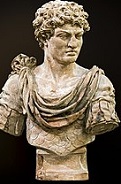
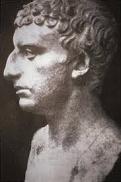



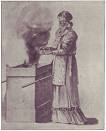

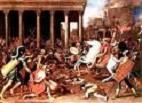
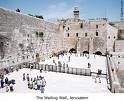
At the beginning of the year 70 C.E. the Jewish pop. in Judea is 2.5M, plus 4M outside Judea in the Jewish Diaspora, representing 15% of the pop. of the Roman Empire, with as high as 35% in some eastern cities; all still pay the annual Jerusalem Temple tax; an oracle that a Jew will become ruler of the world pumps them up? On Apr. 14 (Nisan 14) (right before Passover), 70 C.E. four Roman legions (80K soldiers) (V Macedonica, XII Fulminata, XV Apollinaris, X Fretensis) under Vespasian's son Titus Flavius Vespasianus (39-81) and his wily Alexandrian Jewish 2nd in command (procurator of Judea in 46-48 and prefect of Egypt in 66-9) Tiberius Julius Alexander, along with Jewish turncoat gen. Josephus arrive in Jerusalem, trapping the pop. inside the city along with the pilgrims and refugees after allowing them to enter to celebrate Passover; King Malichus II of Nabataea (-70) (S Jordan) sends 5K horse and 1K soldiers to help Titus; on Apr. 21 the Romans begin a full-scale assault concentrating on the Third Wall in the NW, which collapses on May 6 (Iyar 6); on May 11 (Iyar 12) they breach the Second Wall and begin circumvallating the city, cutting down all trees within 15 km (90 stadia) and build a 4.5-mi.-long wall of pointed stakes around the city, just like Jeezy allegedly predicted in Luke 19:43-44 ("Your enemies will build around you a fortification with pointed stakes and will encircle you and distress you from every side, and dash you to the ground, you and your children within your wombs, and they will not leave one stone upon another, all because you did not recognize the time of your visitation"); the siege strips all fruit trees, causing a famine, which is compounded by the scrappy Jews destroying each other in a civil war between the Zealots, led by Eleazar ben Simon (-70) (who occupy the inner court of the Temple), an opposing group of 6K led by John of Gischala (Johannes ben Levi), and the extremist dagger-wielding contract-killer Sicarii ("dagger-men"), led by Simon (Simeon) bar (ben) Giora ("son of a proselyte") (-70) (cmdr. of the Idumeans), who begin dressing in women's clothing and walking the streets to kill men for sport; Simon finally defeats John in a siege on the Temple, pulling some of his men out and forming a new faction, after which citizens have to climb over corpses in the Temple to offer their sacrifices; on May 20/21 a "certain prodigious and incredible phenomenon" is allegedly seen, consisting of chariots and troops in the clouds; on June 4 (Sivan 6) (Shavuot), priests in the Temple feel a quaking and hear "a sound of a great maltitude saying, 'Let us remove hence'"; on July 14 (Tammuz 17) sacrifices in the Temple cease forever; on July 20 the Romans capture the Fortress of Antonia N of the Temple, and set fire to a cloister, while the Zealots draw them into street fighting; meanwhile the Romans encircling the Holy City of Jehovah let it starve down to cannibalism, capturing any escapees and crucifying them for those inside the city to see, while letting others gorge until their stomachs burst? (a fulfillment of Deuteronomy 28:53-7)?); on Aug. 3 they break through into the inner courtyards, where 6K Jewish Zealots are waiting to fight to the death while being hamstrung by having to observe the purity laws and stay in their apprpriate places, leaving the priests to defend the Temple bldg.; finally on Aug. 4 after a 142-day siege (Nisan 14 to Elul 7) they storm it, batter down the N wall, work their way to the temple and massacre the desperate defenders, then set fire to it; Jerusalem falls in the summer; the Second Temple of Jehovah (Jerusalem) burns on the 10th day of the month Av (Aug. 4), then is torn apart stone by stone Roman soldiers of the 10th Legion Fretensis (of the Sea Strait) to get at melted gold and silver, who fail to find 50 tons of holy relics, incl. the temple's golden candelabrum et al., which remains a mystery until modern times; Herod Agrippa II returns from Rome just in time to see Jerusalem fall; the entire city is levelled by order of Titus, with the exception of the three great towers of Phasaelis, Hippicus, and Miramne; 1M-1.3M are killed (1.1M according to Josephus), and 97K Jewish POWs are taken (a fulfillment of Luke 21:23-24?), some being later used to build the Roman Colosseum and the Forum of Peace; Phannias den Samuel is killed during the destruction of the Temple; Simon bar Giora hides out in an underground cavern with his men, but when they fail to dig an escape passage and their supplies run out, he surfaces on the burned-out Temple Mount wearing a white frock and purple cloak, hoping to wow the supersititous Romans and walk away, only to be captured by Temple Mount capt. Terentius (Titus Arinius) Rufus, and later hurled down the Tarpeian Rock in Rome; Rufus has a plough drawn over the former temple courts to signify that it will never be rebuilt but will only be used for agricultural purposes; pesky John of Giscala is taken to Rome and sentenced to life in priz, with some modern scholars claiming he is the author of the Book of Revelation; Judea is depopulated of Jews, the worst tragedy in Jewish history until ?; the original Jewish religion ceases to exist, as there is no longer a temple or priesthood with sacrifices, and the genealogical records used to prove eligibility are destroyed, causing the remaining Jews to dummy-up a makeshift version, and mourn the loss of the Temple by wearing black, breaking a glass at weddings, and other tokens, while hoping, dreaming and plotting to rebuild it, meanwhile living in a zonked state of mind since they are all technically dying in their sins, unable to get the BBQ pits going at the Holy Golden Arches and sacrifice bulls, goats, etc.; meanwhile the Christian cult experiences a giant boost, since it can now claim that Jehovah had the Temple destroyed to punish the Jews for rejecting his son Jesus 40 years earlier, and has therefore done an Ahnuld and "called it a divorce" and given the Jewish birthright to Christians in their place (like when Esau sold his birthright for a pot of lentil stew?), and that all "gentiles" (originally the descendants of the Roman gens, but coming to mean anybody) can become the new chosen people ("spiritual Jews") if they accept Jesus as their savior and sacrificial lamb presented in a spiritual temple for their sins, the physical one no longer being needed any more than the obsolete Jewish Law and its impossible rules and regulations; in Jehovah's cosmic poetic justice, the ignorant Romans, in killing off the Jewish people and religion and quelling the pesky Christians, have actually opened their empire to takeover by the new improved spiritual Jews that can use the roads, Pax Romana, common Greek Koine language et al. to their advantage (what a heady feeling?)
In 70 C.E. ruined Jerusalem became the barracks of the Roman Legion X Fretensis, commanded by Trajan's father Marcus Ulpius Traianus (30-99), and no civilians lived there for 60 years. The center of stiff-necked Jewish community leadership and scholarship moved to Javneh (Yavne) (Jabnah) (Jamnia) in C Israel, where the Sanhedrin (High Court) Era of Judaism began (until 640), and the term silly rabbit, er, rabbi was first used for Hillel's student Yochanan ben Zakkai (30-90), who escaped from Jerusalem in a coffin, then founded a school there with the permission of Emperor Vespasian, and made it the HQ of the Sanhedrin, which began work on the Mishna (Mishnah) (Heb. "study and review"), a redaction into writing of the Oral Torah; the Tannaitic Rabbinic School of Palestine was founded (until 300). The use of the 2nd cent. B.C.E. Greek Septuagint trans. of the Hebrew Bible by the new Christian cult soon caused Jews to discontinue its use as the reconstituted Pharisee leadership banned Christian Jews from their worship. Herod Agrippa II and his sister-lover Bernice moved to Rome, where he was given the office of praetor. A special annual tax of two drachmas was levied on all Jews until the year 361. In Oct. Vespasian returned to Rome to give thanks to Jupiter Optimus Maximus for helping him kick Jehovah's butt, and new praetor Helvidius Priscus proposed that although the financing should be left to the discretion of the Senate, the Temple of Jupiter, which had been destroyed in the civil war should be restored at public expense.
On July 3, 72 C.E. Judean (born in Galilee) Jewish convert Christian missionary St. Thomas the Apostle (b. ?), "the apostle of Kerala" is martyred in India in Parangimalai, Chennai, Chola (modern-day Little (Thomas) Mount) (near Madras) in Tamil Nadu, becoming the patron saint of India.
In 73 C.E. another Jewish revolt in Alexandria is quashed by the Romans.
In 73 C.E. the revolt of Jonathan the Weaver in Cyrene (Libya) is quashed by the Romans under Gov. L. Valerius Catullus; thousands of wealthy Jews are murdered.
Tired of another sleepless night? For falling asleep and staying asleep, try what? The original income tax panic? On Apr. 16, 74 C.E. (dawn) the Great Jewish Revolt (begun 66) ends with the fall of the Jewish Sicarii-held fortress of Masada overlooking the Dead Sea to the Roman Legio X Fretensis, led by Judean gov. Lucius Flavius Silva, when they burst through the gate and find all 960 Jews (everybody except 2 women and 5 children) dead; according to Josephus, who is there and interviews the survivors, they committed un-Jewish mass suicide after being talked into it by their leader Eleazar, who gives an Essene-like speech talking about an immortal soul that unites with God in death, with the soundbyte: "Death gives freedom to our souls and lets them depart to their own pure home where they will know nothing of any calamity; but while they are confined within a mortal body and share its miseries, in strict truth they are dead"; the siege really lasted only a few eeks? was it really covered-up murder?; the Romans garrison the fort for the next 40 years.
In 74 C.E. Syrian jail prisoner Mara Bar Serapion writes a letter to his son Serapion referring to the "wise king" executed by the Jews sometime in the past?
About 90 C.E. the Synod (Council) of Jamnia (Javneh) (Jabnah) in Yavneh, headed by Rabbi Johannan ben Zakkai fixes the canon of the Hebrew Scriptures for the Jews, finally accepting the Song of Songs (Song of Solomon) (Canticum Canticorum) (Shir Ha-Shirim) after Rabbi Akiba (50-135) declares "No day in the history of the world is worth the day when the Son of Solomon was given to Israel", and "The Song of Solomon is a holy of the holies"; it only discusses the Song of Songs and Chronicles, and doesn't fix any Jewish canon, which was already fixed during the Hasmonean Dynasty in -140 to -40?; meanwhile Jews are ordered to reject the Greek Septuagint and curse ninny Jesus Christ - no shitting?
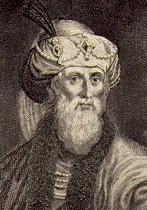
In 94 C.E. turncoat Jewish historian Titus Flavius Josephus (Joseph ben Matityahu) (37-101) writes Antiquities of the Jews (Judean Antiquities) (20 vols.), becoming the only surviving historical record of the Jewish War, leaving fans thirsting for more on Jeezy Weezy, a little too much?



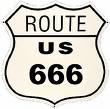


In 96 C.E. St. Paul writes the First Epistle to the Corinthian Church, which alludes to his Epistle to the Hebrews. I'm so smart that I thought you were my son? About 96 (before or after Domitian dies?) aged Christian apostle St. John the Evangelist (6-100), son of Zebedee and younger brother of James the Greater, former disciple of John the Baptist, called Boanerges ("sons of thunder") by Jesus along with James for their zeal, now pastor (bishop?) of Ephesus, exiled by Domitian to the 13-sq.-mi. rocky goat isle of Patmos in the Dodecanese off the SW coast of Asia Minor dicates the ultimate Millennium Feverist handbook The Revelation (Apocalypse) of (St.) John to his scribe Prochoros from the Holy Grotto (Cave of the Apocalypse) of Patmos, where Christ allegedly visits and/or sends an angel to visit his last surviving apostle and tries to explain why he isn't coming back as soon as they all thought, and in fact he himself doesn't know, only God?; the Seven Churches of Asia (Minor) in W Turkey are addressed, incl. the Church of Ephesus, the lukewarm Church of Laodicea, the Church of Pergamum, the Church of Philadelphia, the Church of Smyrna, the Church of Thyatira (Thyateira), and the Church of Sardis; Ch. 20 starts up Millennium Fever (MF) among Christians, the belief that Christ one day will return to Earth, conquer the "Beast", cast Satan and his followers into the abyss for 1K years, and reign as king with the resurrected faithful becoming princes and priests; but that's not all; the test is repeated, and at the end of the 1K years Satan is let loose again for a short time to recruit new followers, then put they are all put in the Lake of Fire (the second death) forever, and by now all the dead are resurrected and judged, either to eternal life or the second death along with Big S; Rev. 13:18 starts 666 Fear (hexakosioihexekontahexaphobia), the horrible-but-cool hangup that there's just something beastly about the Roman number DCLXVI (the first six Roman numerals written from largest to smallest), the idea of man (6) striving to become God, or create a trinity (666), and falling short of perfection (7), which requires the final Roman numeral M (messiah)?; some claim that Roman emperor Nero ("Neron Qesar") is meant because some mss. have 616 instead of 666; believers in the coming Chilling Millennium become known as Chiliasts; after too many of these false alarms cause all hope to be placed on the year 1000, and it proves a bust too, they switch to 1000 plus permutations of 6, 66, and 666, even using month #6 June as one of the magic keys to the big date, even though it said name not date, and some ancient mss. have 616 not 666, which not coincidentally is all the Roman numerals in order MDCLXVI, oops, no M, that's reserved for the real Messiah; call it a coincidence, but the Arabic Symbol for Allah looks a lot like the Greek letters for 666; (after returning to Ephesus?) John also writes the Gospel Accordin to John and the Three Epistles of John about this time; actually John's name is never mentioned in the Gospel According to John, but it gets attributed to him by tradition; in the Gospel of John Jesus never utters parables, but instead performs signs, and never casts out demons; in contrast to the Synoptic Gospels, which concentrate on Jesus' doings in Galilee, it concentrates on his doings in Judea and Jerusalem, displaying a first-hand knowledge of the geography prior to the Jewish Revolt of 66, and seems to show a knowledge of an ancient tradition independent of the other gospels, leading many scholars to consider it the most reliable of the four; the only gospel to describe Jesus' turning of water into wine at the wedding in Cana (2:1-11), his conversations with Nicodemus (3:1-21) and the Samaritan woman (4:1-42), and the raising of Lazarus in Bethany (ch. 11), along with the Holy Lance of Christ (spear stuck in his side to prove that he's dead after only three hours on the Cross, when most last a day or more, and despite a corpse being unable to pump blood out with a dead heart) (19:34); the only one to describe the role of Nicodemus in Jesus' burial (19:39); the only one with vocabulary not used in the rest, esp. the Gnostic-like talk in the Logos Passage (John 1:1-18): "In the beginning was the Word, and the Word was with God, and the Word was [a?] God. He was in the beginning with God. All things were made through Him, and without Him nothing was made that was made...", creating the eternal Arian vs. Athanasius Controversy: in the beginning of God's Creation did he first create the Word AKA Christ (Love?), then use him to create all else, hence Christ is a created being not God, or was the Word there in the beginning with God, thus is God, even though God has no beginning, and is eternal and uncreated?; so, as the 1st cent. ends, despite the skimpiness of history, God spoke and laid out the complete Plan of the Man in the New Testament; the whole point of Christ is to suspend God's judgment of eternal death on truly repentant sinners (Mk. 2:17, Acts 17:30) by coming the first time to save them (John 3:15-18, John 12:47) and the second time to judge them (Acts 17:31, Heb. 9:28), which is why he tells everybody that his blood will pay for their sins prior to conversion (Heb. 9:11-28), but afterwards to sin no more (John 5:14, 8:11), because sin (violating the Ten Commandments incl. having other gods, taking the Lord's name in vain, lying, stealing, coveting, murdering, committing adultery even with the eyes, etc.) is voluntary, and Christians will be sent the Holy Spirit to keep them from temptation and never sin again (1 John 3:1-10), but those who fall away are out of luck because Christ can't be crucified a second time (Heb. 6:4-6), and blasphemy against the Holy Spirit is unforgivable (Matt. 12:31-32); too bad, some Christian sects have the idea that they can get "saved" and continue sinning, when actually nobody is saved yet, because only at the End of Days will Judge Christ AKA God in Human Form open his court to judge us (Heb. 9:27), and going around claiming to be saved is sinful, taking the Lord's name in vain and lying?; the ultimate Supreme Court, the judgment is either entrance into the Kingdom of Heaven (Mt. 5:19-21, 8:11), or being cast by angels into the Lake of Fire (Rev. 20:15); maybe it's all a fairy tale, but the punchline is that nobody can be sure until they're dead, what a sales pitch.
The man who corrupted First Century Christianity with the belief in the divinity of Christ, or was it like that from the days of St. Peter and he is only the first to write it down? In 115 C.E. (St.) Ignatius of Antioch (35-117) is taken by Roman soldiers to Rome, and during his journey writes Six (Seven) Letters to the Churches in Ephesus, Magnesia, Trallia, Rome, Philadelphia, and Smyrna, where he stops en route, writing four of them there?; he becomes the first to call Jesus Christ "our God" (letter to the Ephesians), and extols the office of bishop, saying "one must look upon the bishop as the Lord himself" (Eph. 6.1), claiming that he presides in the place of God (Mag. 6.1); he extols the Eucharist, and notes that Christians now celebrate the Lord's Day (Sunday) instead of the Jewish Sabbath (Saturday); he claims that martyrdom is a means to "attain to God" (Rom. 4.1).



In 132 C.E. after a thousand years living in their homeland of Israel, many of them under oppression, and now reduced to the Roman province of Judea, the Bar Kokhba (Kochba) (Cocheba) Uprising under Simon (Shimon) Bar Kokhba (Kochba) (Cocheba) (-135) (Heb. "Son of a Star") (real name Bar/Ben Kosiba or Kozebah) is launched against Roman emperor (117-38) Hadrian (Publius Aelius Traianus Hadrianus) (75-138). In 135 the Romans under troubleshooter gen. Sextus Julius Severus (gov. of Britain in 131-3) put down the pesky Bar Kokhba Revolt (begun 132); the Jews' butts are kicked bigtime, and 580K are killed (half the pop.), 985 towns and villages are destroyed, and Jerusalem is plowed with oxen; Hadrian issues an edict ordering the Jews expelled from Israel (only permitted to enter Jerusalem once a year), completing the Jewish Diaspora (Heb. "Tefutzah" = scattered), the dispersion of the pesky oddball square-peg-in-a-round-hole Jews throughout the Roman Empire; Judea is renamed Syria-Palestina (coined by Herodotus), and the way is now clear for the spreading of the name Jah-Zeus (Jehovah-Zeus) (Jesus) by the empire-wide Catholic (universal, as in get all the pagans to join the Church no matter how much the original faith has to be diluted) conspiracy, when his real name was Yeshua, and being too Jewish it's now un-PC; the whole Jesus fable was invented at this point to get even with the Romans, with the destruction of the Jewish Temple in 70 C.E. used as a blind screen so that later historyscopers would scope in vain 60 years too early?; Rabbi Akiva ben Joseph (50-135) is executed by the Romans after teaching the Torah in public after the revolt; the Ebionites (Heb. "ebyon" = poor) sect of Jewish Christians who deny the divinity of Christ and consider St. Paul an apostate for declaring the supremacy of Christian teaching over the Mosaic Law heads W across the Jordan River into Peraea (modern-day Jordan), isolating themselves from the main body of Christians and adopting a conservative Pharisaic creed that evolves into a combo of Christianity, Gnosticism, and Essenism, and split into groups who believe or reject the Virgin Birth; they die out by the 5th cent.; in 1960-1 Yigael Yadin (1917-84) excavates the Cave of Letters in the desert W of the Dead Sea, discovering a basket at the bottom of a privy containing 19 bronze items, which are housed in the Shrine of the Book near Givat Ram in W Jerusalem, incl. a patera (libation dish) with an engraving of the Greek-Roman goddess Thetis, mother of Achilles, causing speculation as to whether these are sacred objects from the Temple of Jehovah (destroyed 70); a purse containing the 35 Papers of Babatha, a woman who owned a date orchard in En-Geddi on the W shore of the Dead Sea is found, incl. dated orders by Bar Kokhba, showing him as a meany who threatened and ordered the arrest of fellow Jews; comparison of C-14 dates causes Magen Broshi to propose Broshi's Law that the oldest extreme of the C-14 date range is the most accurate; bones of starved women and children are later found, along with remnants of a Roman army outpost on top of the mountain; Cochin (Malabar) in SW India becomes a haven for Jews until modern times; the Diaspora didn't really happen, and modern Muslim Palestinians are their descendants?

In 140 C.E. Roman writer Gaius Suetonius Tranquillus (b. 69) dies, leaving De Vita Caesarum (Lives of the Caesars) (The Twelve Caesars), and Divus Claudius, which contains the famous soundbyte: "Since the Jews constantly made disturbances at the instigation of Chrestus, he expelled them from Rome."
About 170 C.E. the School of Antioch is founded as a rival to the Catechetical School of Alexandria, pushing a more literal exegesis that emphasizes the difference between the human and divine in the person of Jesus Christ; students incl. Nestorius.
In 179 C.E. converted Greek Stoic philosopher St. Pantaenus the Philosopher (-200) of Alexandria visits India and meets Christians there, returning to found the Catechical School of Alexandria (AKA the Didascalium); his most famous student and successor is Clement of Alexandria (Titus Flavius Clements) (150-215), "the Sicilian bee".

She loves you, yah yah yah yah? About 180 C.E. Smyrna-born Bishop Irenaeus of Lyons (130-202) writes Against (the) Heresies (Refutation and Overthrow of Gnosis, Falsely So Called) (5 vols.), which accuses Marcion of Sinope, Valentinus and other heretics of the One Gospel Fallacy, i.e., sticking to just one gospel to justify their misguided doctrines, the Jewish Christians sticking to Matthew, the Marcionists to Luke, the Christ-denying Gnostics to Mark, and the Valentinians to John, using Ezek. 1 to solve the equation, with the immortal soundbyte: "It is not possible that the Gospels can be either more or fewer in number than they are, for since there are four courners on the Earth in which we live, and four principal winds, while the Church is scattered throughout the world, and the pillar and ground of the Church is the Gospel... it is fitting that she should have four pillars" (3.11.7); Irenaeus then stokes Millennium Fever with the suggestion that since 6 precedes the perfect number 7, the number 666 embodies the original, present, and final revolts against God, while Jesus' number in Greek is 888 (5.28.2); Irenaeus also becomes the first writer to name the Four Evangelists (me, myself and Irenaeus?), causing later Christian paintings to show the four Gospel writers in the four corners (of the painting) as an angel (Matthew), lion (Mark), bull (Luke) and eagle (John); he denounces the 13-page papyrus Gnostic Coptic Gospel of Judas, "The secret account of the revelation that Jesus spoke in conversation with Judas Iscariot", which claims that Judas was the only disciple who understood and followed Christ (who mocks the others), and that Jesus actually asked Judas to betray him, and that therefore he's one cool dude; "Step away from the others and I shall tell you the mysteries of the kingdom"; "Look, you have been told everything. Lift up your eyes and look at the cloud and the light within it and the stars surrounding it. The star that leads the way is your star"; "You will be greater than all the others, Judas. You will sacrifice the man that clothes me"; "You will be cursed by the other generations - and you will come to rule over them"; a Coptic language copy dated to 280 is lost in the 4th cent., discovered in 1970 in a cave near El Minya, Egypt, put in a safe deposit box until it begins to deteriorate, and finally pub. in English trans. by the Nat. Geographic Society in Apr. 2006; written at a time when the Romans were killing Christians while the Christian bishops actually encouraged martyrdom, the whole thing is aimed at stopping their own bishops by guilt-tripping them?
In 180 C.E. Greek Christian theologian (St.) Melito of Sardis (b. ?); leaves Homily on the Passion, which incl. the doctrine of the Harrowing of Hell, based on Bible passages in Is. 24:21-22, Zech. 9:11, Eph. 4:8-10, 2 Cor. 2:14, Acts 2:27 and 2:31, 1 Peter 3:19-20 and 4:6, in which Jesus Christ allegedly descended into Hell and freed the righteous who died before he came, incl. Adam and Eve - the holy Mission: Impossible?

In 197 C.E. despite Christ not returning as soon as he seems to have promised, Romanized pagan lawyer from Carthage Tertullian (160-230) converts to Christianity (probably aided by the spectacle of the Christians in the arena) and immediately begins vigorously promoting it, becoming the first to call it the "true religion" (vera religio); his writings coin the terms sacrament, resurrection, trinity, person (in the trinity), substance, and New Testament, and give Christianity a new lease of life by being the first written in Latin; too bad, he begins speaking out against classical culture and Roman power, drawing the 3rd cent. persecutions? - and if he was black, back atcha?
In the 2nd-3rd cents. C.E. Gnostic writings flood the scene, incl. the Gospel of Thomas (alleged sayings of Jesus, which are later trans. to Coptic and buried c. 340 near Nag Hammadi, Egypt), Apocalypse of Baruch, Epistle of the Apostles, Second Epistle of Clement, The Gospel of Mary, The Gospel of Philip ("And the companion of the Saviour is Mary Magdalene. Christ loved her more than all the disciples and used to kiss her often on her mouth"), The Ophite Diagrams, The Dialogue of the Savior, The Apocryphon of John, Trimorphic Protennoia, The Valentinian Exposition, The Apocryphon of James, and The Epistle of Mathetes to Diognetus, which contains the soundbyte about Christians that they: "dwell in their own countries, but only as aliens; as citizens they take part in everything, but endure all hardships as strangers; every foreign land is a fatherland to them, and every fatherland is foreign. They inhabit the earth, but they hold citizenship in heaven."
In the 2nd cent. C.E. the Corpus Hermeticum ancient Greek-Egyptian wisdom texts are redacted in the form of dialogues with Hermes Trismegistus ("Thrice-Greatest"), launching Hermeticism in the West, with a basic belief in the Four Elements of the Universe, and the Seven Intermediary Planetary Spirits created by God to govern destiny; in ancient times the god Hermes was worshipped in the form of a square pillar with a head and beard, and the Caduceus was his symbol; "Seeing within myself an immaterial vision that came from the mercy of God, I went out of myself into an immortal body, and now I am not what I was before. I have been born in mind!"
In the 2nd cent. C.E. the 2nd cent. B.C.E. Martyrdom of Isaiah begins to be added to by New Kid on the Block Christians, the original five chapters augmented by five more describing Isaiah's ascension to Heaven and vision of Jesus' life and resurrection.
About 200 C.E. the Alexamenos graffito on a plaster wall in a room near the Palatine Hill of Rome, drawn by a pagan Roman soldier mocks a fellow Christian soldier, depicting a crucified donkey; the early known pictorial depiction of the crucifixion of Jesus?
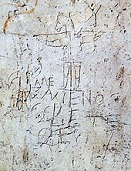
Early in the 3rd cent. C.E. the Domus Gelotiana Graffito depicts Jesus Christ as a donkey being crucified on a cross, mocking a Christian worshiper named Alexamenos; discovered on the Palatine Hill of Rome in 1857 in a house used as a boarding school (paedagogium) for imperial page boys founded after the death of emperor Caligula (d. 41) on a street that was later walled off.
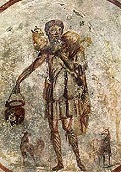
In the 3rd cent. C.E. the beardless Jesus the Good Shepherd is painted in the Catacomb of Calixtus in Rome on the Appian Way, which becomes the Crypt of the Popes until Pope Damasus I in 384.

In 215 C.E. after leaving Alexandria for Jerusalem in 202, Athens-born Christian convert St. Clement of Alexandria (Titus Flavius Clemens) (150-215) dies in Jerusalem after combining Christianity with Greek philosophy, calling Plato the Attic Moses, and promoting a serene way of life in order to reach the vast Quietness within, along with Divince Companion "sharing our house with us, sitting at table, sharing in the whole normal effort of our life", while touting Jesus as "the living God that suffered and is worshipped"; his pupil Origen takes his place in Athens.
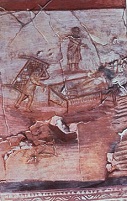
About 235 C.E. the Healing of the Paralytic is painted in the Syrian city of Dura -Europos, becoming one of the oldest known depictions of Jesus Christ; rediscovered in 1932 C.E.

On Apr. 21, 248 C.E. Rome celebrates its big 1,000th birthday with secular games (Ludi Saeculares) presided over by pagan emperor Philip I the Arab, who throws one hell of a party, and has 1K gladiators fight to the death, along with hundreds of exotic animals - bringing back many good memories, maybe some sad ones too?
In 248 C.E. Christian bishop (Church father) Origen (Gr. "born of Horus") Adamantius (Gr. "unconquerable") of Alexandria (182-253) writes Contra Celsum (Kata Kelsou) (Against Celsus) (8 vols.); written in Caesarea at the request of his patron Ambrose after receiving a copy of pagan philosopher Celsus' 178 work The True Word (Logos Alethes) against Christianity in 240, which is later lost on purpose, attacking Jesus Christ for "perverting the words" of the great Greek philosopher Plato, who "is not guilty of boasting and falsehood" like Christian theologians; for attracting the uneducated lower classes, with the blind faith required of Christians ("Do not ask questions, just believe; thy faith will save thee"), and refusal to recognize the state religion that requires regular sacrifices to the emperor's genius or to serve in the Roman military threatening the empire's stability, compounded by Christians' secrecy, "entering into secret associations with each other contrary to law"; his refutation praises the philosophy of Plato but claims that the Bible agrees with it and contains even greater wisdom, that Greek philosophers accept the doctrines of their school founders without question too, and that Christianity has "Spirit and power" (1 Cor. 2:4), as proved by Jesus selecting lowly peasants as his disciples to show the world that learned rhetoricians aren't needed to spread the faith; he counters Celsus' argument that the incarnation of Jesus is moose hockey by the assertion that the Logos could only reveal God to man by first becoming flesh; after showing that pagan myths can be just as ludicrous as the Bible stories he objects to, Origen claims that that all Christians are priests and should drop out of the system like pagan priests do; finally, that Christians' secrecy regarding mystical teachings is no different than the Pythagoreans'; considered a slam dunk, it becomes the std. Christian apology.
About 300 C.E. the first image of a fully bearded Jesus emerges; it takes until the 6th cent. to become established in the Eastern Roman Empire, taking much longer in the Western Roman Empire.

In 309 (305?) C.E. Neoplatonist philosophy, er, philosopher Porphyry of Tyre (b. 233) dies, leaving the (tiring?) 15-vol. pagan bestseller Against the Christians (Adversus Christianos), which shows that the Book of Daniel was written by a Jew during the time of Antiochus Epiphanes (216-164 B.C.E.); "If the writer was not Daniel, then he lied on a frightful scale, ascribing to God prophecies which were never uttered, and making claim of miracles that were never wrought. And if Daniel's authorship could be shown to be false, then Christ Himself would be proved to bear witness to an imposter" (Matt. 24: 15); "The evangelists were inventors not historians"; too bad, it is banned by Constantine the Great and ordered burned in 443 - too little too late?


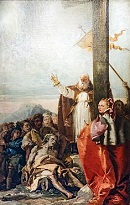

In the five cents. following the Bar Kokhba revolt, Big J remained under Roman then Byzantine rule, which started out pagan until Roman emperor (306-37) Constantine I the Great (272-337) converted to Christianity in 312 and declared it the empire's official religion in 313, moving the empire's capital from Rome to new digs in Byzantium, which he called New Rome but became known as Constantinople, launching the Byzantine Empire. On May 3, 326 C.E. after restoring Jerusalem's name and making it a Christian rather than pagan city, Constantine I sends his mother James Cameron, er, St. Helena (246-330) on a 2-year pilgrimage to the Holy Land, where she founds the Church (Basilica) of the Nativity in Bethlehem on top of a cave, which becomes the oldest major church in the Holy Land, and oldest continuously-used place of worship in Christianity; Helena and Jerusalem bishop (since 312) St. Macarius (d. 334) raze the Roman bldgs. in Jerusalem incl. Emperor Hadrian's Temple of Jupiter Capitolinus in the NW corner of Jerusalem, discovering a rock-cut tomb, which Helena and Macarius identify as the burial site of Jesus Christ, along with the alleged True Cross of Christ in the excavation site that she claims is distinguished from several others because of an alleged miracle in which a woman is cured in a blind test of three crosses, after which the Anastasis (Gr. "Resurrection") rotunda is built over it, along with the Martyrium basilica containing the traditional site of Calvary; the church is consecrated on Sept. 13, 335; it becomes the heart of the Christian Quarter of Jerusalem, which becomes a Christian tourist mecca; the Church of Eleona is built on the Mount of Olives; the Finding of the Holy Cross Festival is later celebrated each May 3. Pagan Christian wannabe Constantine I orders the execution of his eldest son Crispus and his wife Fausta by means of suffocation in an overheated bath after they are accused of hooking up; Constantine II is put in charge of Gaul. After most Christian documents were destroyed in the 303 Diocletian Persecution, Constantine I orders orders confiscation and destruction of all works challenging Christian orthodoxy, incl. pagan works referring to Jesus; he orders a fixed income to be allocated to the Church, and installs the bishop of Rome in the Lateran Palace.
In 340 C.E. Bishop Eusebius first quotes the Testimonium Flavianum, in which 1st cent. C.E. orthodox Jewish historian Josephus claims to believe in Jesus Christ and confirms his existence; the short passage conveniently just fits at the end of some scroll?
In 390 C.E. the Syriac Doctrine of Addai begins to be written (until 430), about the conversion of Edessa after Jesus corresponds with King Abgar.

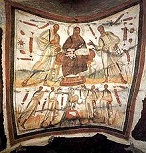
In the late 4th cent. C.E. the Bearded Christ is painted in the Catacombs of Commodilla in Rome on the Via Ostiensis, becoming one of the earliest known bearded depiction of Jesus Christ along with the Bearded Jesus Between Peter and Paul in the Catacombs of Marcellinus and Peter 3km SE of Rome near the Via Labicana.
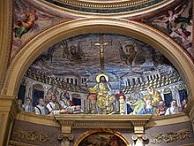
About 400 C.E. (400-410) the bearded Christ Pantocrator (Gr. "All-Powerful") is painted in the Church of Santa Pudenziana in Rome, which becomes the first place of Christian worship in Rome.

In the 6th cent. C.E. the Byzantine-style Christ Pantocrator (Gr. "All-Powerful") is painted in St. Catherine's Monastery in Sinai, becoming the earliest Byzantine pantocrator panel icon of Christ to survive to modern times, becoming a model that all later Byzantine artists slavishly copy.

In 570 C.E. the 34 in. x 21 in. Sudarium (Lat. "sweat cloth"), the alleged face cloth of Christ in the tomb is first mentioned by Antoninus of Piacenza, who claims it is being cared for in a cave near the monastery of St. Mark near Jerusalem.
In the 9th-10th cents. C.E. the Toledot Jeshu (Book of the Life of Jesus) is written, calling Jesus Christ a bastard (result of rape of Mary by Roman soldier Joseph Pandera), and accusing him of magic, witchcraft, and a shameful death, becoming a big piece of ammo for anti-Semites incl. Martin Luther; in 1681 Johann Christian Wagenseil pub. a Hebrew version with a Latin trans. titled "Satan's Flaming Arrow" (Tela Ignea Satanae).
In 1261 The Slavonic Josephus is written by anon., an alleged original version of Josephus that describes Jesus as a human political revolutionary, a "king who did not reign", who had "a line in the middle of his head in the manner of the Nazireans"; it was in the time of Constantine I the Great that Josephus got doctored to turn Jesus into the Messiah?
In 1267 Portugal fixes its border with Castile.

In 1353 the mysterious 14 ft. 5 in. x 3 ft. 7 in. Shroud of Christ (Turin) first emerges in the possession of French knight Count Geoffroi de Charny (1300-1356) of Lirey, France, who owns it equally with his new wife, descended from Knights Templar Robert de Clare (leader of the Fourth Crusade)?; in 1390 he presents it to Bishop Pierre d'Arcis, dean of the Lirey Abbey, who writes to Pope Clement VII, calling it a forgery whose artist confessed; in 1413 the Charnys' descendent Marguerite reclaims it despite threats of excommunication; what does this mysterious dude have to do with Knights Templar deputy Geoffroi de Charnay (-1314), roasted in 1314, his descendant?

On Mar. 1, 1768 German Enlightenment philosopher Hermann Samuel Reimarus (1694-1768) dies in Hamburg after founding Deism, which denies the existence of the supernatural and considers God to be the Great Watchmaker of the Universe, who created it and set it in motion then left it alone; he also leaves the first critical historical analysis of Jesus Christ, arguing that he simply wanted to found a godly state, and died in despair when he failed, with the idea that he died to atone for mankind's sins attributed to St. Paul, making Jesus the teacher of a "remarkable, simple, exalted, and practical religion"; in 1774 he posth. pub. posth. pub. Criticism of the Gospels, questioning their historicity and authenticity, launching theology-and-doctrine-free Higher (Historical) Criticism; Thomas Paine takes on the job of bringing it down to the masses?
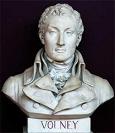
In 1791 Craon, Mayenne-born French philosopher-historian Constantin François de Chassebœuf, Comte de Volney (1757-1820) (born with surname Boisgirais and changing it to Volney = Voltaire + Ferney) pub. the book Les Ruines, ou Meditations sur les Revolutions des Empires (The Ruins, or Meditations on the Revolutions of Empires), which questions the historicity of Jesus Christ along with all revealed religions, calling for absolute separation of church and state in a govt. that allows enlightened self-interest to flourish, after which all religions will recognize their common underlying truth and unite; "From this we conclude, that, to live in harmony and peace... we must trace a line of distinction between those (assertions) that are capable of verification, and those that are not; (we must) separate by an inviolable barrier the world of fantastical beings from the world of realities"; Volney visits Thomas Jefferson at Monticello in June 1796, getting Jefferson to agree to trans. his book into English, giving up after 20 chapters and handing the work to Paris-based Joel Barlow so he can disassociate himself from a political hot potato and run for U.S. pres. In 1819 he pub. New Researches on Ancient History.

Hey now, you're an all-star, get your game on? In 1793 Thetford, Norfolk, England-born Am. Founding Father Thomas "Tom" Paine (1737-1809) pub. The Age of Reason; Being an Investigation of True and Fabulous Theology (1794, 1795, 1807); bestseller in the U.S. written just before being thrown into prison in France, pub. with the help of his friend Joel Barlow; a rabble-rousing Rationalist Deist attacks the divine origin of the Bible, becoming the Infidel's Bible, setting the 19th cent. up for secularism and belief in scientific progress as a replacement religion for Christianity, with pithy soundbytes incl.: "Belief in a cruel God makes a cruel man"; "One good schoolmaster is of more use than a hundred priests"; "I do not believe in the creed professed... by any church that I know of. My own mind is my own church"; "The story of the whale swallowing Jonah... borders greatly on the marvelous, but it would have approached nearer to the idea of a miracle if Jonah had swallowed the whale"; "It is wrong to say that God made rich and poor; he made only male and female, and gave them the whole earth for their inheritance"; he gets widely accused of being an atheist, when actually he attacks atheism in the book and supports Deism, but the bigoted religious reaction (which incl. most of his old Am. friends, incl. Washington) causes his place in the pantheon of Am. Founding Fathers to get tainted, and later the infidels strike back by attempting to paint all the U.S. Founding Fathers (incl. Bible-thumping Washington) as Deists and overdo separation of church and state? - was Paine their "rabbit", writing what they all believed but couldn't openly express, or was he just out on a limb, too extreme but holding onto the Founding Father main trunk for support?

In 1820-9 German Jewish historian Isaak Markus Jost (1793-1860) pub. The History of the Israelites from the Time of the Maccabees (9 vols.), the first serious modern work on Jewish history; too bad, it treats the Bible miracles as fairy tales, along with the Messiah, and recommends that Jews assimilate.

In 1820 after writing "The Philosophy of Jesus of Nazareth" in 1804 (no copies survive), U.S. Dem.-Repub. pres. #3 (1801-9) Thomas Jefferson (1743-1826) completes The Life and Morals of Jesus of Nazareth AKA The Jefferson Bible, a cut-and-paste job on the New Testament excluding all mention of the supernatural incl. Jesus' miracles and resurrection, plut anything that portrays him as divine. On Sept. 18, 1813 Thomas Jefferson writes a letter to William Canby, with the soundbyte: "Of all the systems of morality, ancient or modern, which have come under my observation, none appear to me so pure as that of Jesus. He who follows this steadily need not, I think, be uneasy, although he cannot comprehend the subtleties and mysteries erected on his doctrines by those who, calling themselves his special followers and favorites, would make him come into the world to lay snares for all understandings but theirs. These metaphysical heads, usurping the judgment seat of God, denounce as his enemies all who cannot perceive the Geometrical logic of Euclid in the demonstrations of St. Athanasius, that three are one, and one is three; and yet that the one is not three nor the three one."


In 1833-5 Swiss theologian David Friedrich Strauss (1808-74) pub. The Life of Jesus, Critically Examined (Das Leben Jesu, Kritisch Bearbeitet) (2 vols.) (4th ed. 1840, tr. into English by George Eliot in 1846 in 3 vols.), which says what all the Rationalists have been thinking, rejecting the miracles and Virgin Birth of Christ as myths, and showing that there is no way to construct a historical image of Jesus from the New Testament to serve the Christian faith, although the myths they are based on may contain a kernel of truth, causing a giant reaction in Germany; claims that the Gospels were written late in the 2nd cent. C.E.; "The most pestilential book ever vomited out of the jaws of hell" (Earl of Shaftsbury); Albert Schweitzer later writes that Strauss' works "filled in the death-certificates of a whole series of explanations which, at first sight, have all the air of being alive, but are not really so", dividing the Quest for the Historical Jesus into "the period before David Strauss, and the period after David Strauss"; spawns disciples incl. Bruno Bauer (1809-82), who concludes that Jesus was a 2nd cent. myth stolen from Greek and Roman mythology, with Judaism thrown in; too bad, Strauss couches his book in terms of Hegelian philosophy, causing the Young Heglians to chew him up, and academia to bury Bauer's works.

In 1863 Brittany-born French scholar Joseph Ernest Renan (1823-92) pub. the book The Life of Jesus (Vie de Jesus); vol. 1 of the 8-vol. "Histoire des Origines du Christianisme" (1863-81); pisses-off the Roman Catholic Church for treating the life of Jesus like any other man and subjecting the Bible to critical scrutiny, becoming a big hit with Rationalists; the fact that he has Celtic roots in Brittany makes it just too cool?
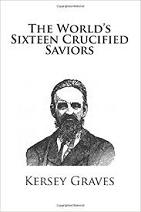
In 1875 Brownsville, Penn.-born Quaker Freethinker Kersey Graves (1813-83) pub. the bestseller The World's Sixteen Crucified Saviors; Or, Christianity Before Christ, Containing New, Startling, and Extraordinary Revelations in Religious History, which Disclose the Oriental Origin of All the Doctrines, Principles, Precepts, and Miracles of the Christian New Testament, and Furnishing a Key for Unlocking Many of Its Sacred Mysteries, Besides Comprising the History of 16 Heathen Crucified Gods, which becomes a hit on the U.S. Freethinker lecture circuit even though the scholarship doesn't stand up to later scrutiny; he might be right but just lacks the documentation?; fans incl. Madalyn Murray O'Hair; "I desire to impress upon the minds of my clerical brethren the important fact, that the gospel histories of Christ were written by men who had formerly been Jews (see Acts xxi. 20), and probably possessing the strong proclivity to imitate and borrow which their bible shows was characteristic of that nation; and being written many years after Christ's death, according to that standard Christian author, Dr. Lardner, it was impossible, under such circumstances, for them to separate (if they had desired to) the real facts and events of his life from the innumerable fictions and fables then afloat everywhere relative to the heathen Gods who had pre-enacted a similar history. Two reasons are thus furnished for their constructing a history of Christ almost identical with that of other Gods."

In 1880 Barmen, Germany-born Protestant theologian-historian Albert Kalthoff (1850-1906) pub. The Life of Jesus: Lectures given to the Protestant Reform Club of Berlin, followed by The Problem of Christ: Principles of a Social Theology (1902), and The Rise of Christianity: New Questions about the Christ Problem (1904) (English trans. pub. 1907), resurrecting the works of Bruno Bauer along with his Christ myth theory; "It sometimes happens in the scientific discussion of a problem that we make a considerable advance towards its solution by abandoning some point of view from which we have fruitlessly striven to master it, and confronting it from a fresh position. The experience suggests itself forcibly in the controversy with regard to the historical character of Jesus. Starting from the theory that the evangelical writings of the New Testament must be regarded as sources of evidence for the life-story of an historical individual, liberal theology has lost itself in a labyrinth from which it cannot escape. Even in circles where the dogma of a personal founder of Christianity is till rigorously maintained, people are beginning to see that very little biographical material can be obtained from the Gospels"; "A Son of God, Lord of the World, born of a virgin, and rising again after death, and the son of a small builder with revolutionary notions, are two totally different beings. If one was the historical Jesus, the other certainly was not. The real question of the historicity of Jesus is not merely whether there ever was a Jesus among the numerous claimants of a Messiahship in Judea, but whether we are to recognise the historical character of this Jesus in the Gospels, and whether he is to be regarded as the founder of Christianity." In 1906 Kalthoff pub. Modern Christendom. On Jan. 1, 1906 Ernst Haeckel forms the German Monists League (Deutscher Monistenbund) in Jena, which reaches 6K members by 1912, with the theological wing led by Kalthoff, along with Emil Jakob Felden (1874-1959), Oscar Mauritz (1867-1959), Moritz Schwalb (1833-1916), and Friedrich Steudel (1866-1939), none of whom believe in the historicity of Jesus Christ; on Dec. 16, 1933 after dwindling to 3.2K members the league is dissolved by the Nazis.
In 1887 British Buddhist Arthur Lillie (1831-1911) pub. Buddhism in Christendom, or Jesus the Essene, which contains the soundbyte: "At any rate the account of the last supper in the Gospel of the Hebrews was manifestly quite different from the accounts given in our present gospels. There we see nothing about James drinking out of Christ's cup, a fact which proves that the contents of the cup must have been water, for St. James was bound by the vow of the Nazarite to drink water for life."
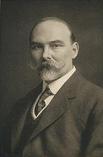
In 1889 after being turned-on by Alfred Percy Sinnett's "Esoteric Buddhism" (1883) and joining her Theosophical Society in 1884, Peckham, Surrey-born English scholar G.R.S. (George Robert Stowe) Mead (1863-1933) becomes Madame Blavatsky's private secy., going on to be a pioneer in Gnostic and Hermetic studies. In 1892 he pub. Simon Magus, followed by Pistis Sophia (1896) (2nd ed. 1921), Fragments of a Faith Forgotten (1900), Apollonius of Tyana (1901), Did Jesus Live 100 B.C.? An Enquiry into the Talmud Jesus Stories, the Toldoth Jeschu, and Some Curious Statements of Epiphanus - Being a Contribution to the Study of Christian Origins (1903), Thrice-Greatest Hermes (3 vols.) (1906), The Gnosis of the Mind (1906), and Gnostic John the Baptizer: Selections from the Mandaean John-Book (1924).

In 1906 Alsace-born big brain "Reverence for Life" physician-philosopher-theologian Albert Schweitzer (1875-1965) pub. the book The Quest of the Historical Jesus: A Critical Study of Its Progress from Reimarus to Wrede (Geschichte der Leben-Jesu-Forschung); English trans. pub. in 1910; 2nd ed. in 1913; how the "real" Jesus was all about "late Jewish eschatology", believing that his ministry would bring about the end of history in a short time; the 2nd. ed. tries to rebut those who claim that he never lived; becomes a std. work, stopping work on the historical Jesus for decades as a sub-discipline of New Testament studies; "He comes to us as One unknown, without a name, as of old, by the lake-side."
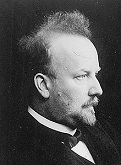
In 1909 Holstein-born German philosopher-historian Christian Heinrich Arthur Drews (1865-1935) pub. the book The Christ Myth in London (English tr. pub. in 1910), joining Bruno Baer and Albert Kalthoff as Germany's pioneers in denial of a historical Jesus, stressing the similarities of the early Christ cult with the popular mystery cults of the time esp. Mithraism, and noting that Christianity could have arisen without a historical Jesus, but not without a historical Paul or Isaiah, with the soundbytes: "The question of the historicity of Jesus is a purely historical question to be settled with the resources of historical research"; "Critics are convinced of the historicity of the gospels a priori, before investigating the subject... [They only have] to seek the "historical nucleus" in tradition... How is it that Weinel knows the [innermost nature] of Jesus so well before beginning his inquiry that he thinks he can determine by this test what is spurious in tradition and what is not?... The gospels, it seems, are to be understood from 'the soul of Jesus', not from the soul of their authors!... Johannes Weiss... acknowledges that in all his inquiries he starts with the assumption that the gospel story in general has an historical root, that it has grown out of the soil of the life of Jesus, goes back to eye-witnesses of his life, and comes so near to him that we may count upon historical reminiscences... There is a further principle, that all that seems possible... may at once be set down as actual... [This is how] all theological constructions of the life of Jesus are based... the historicity of which is supposed to have been proved by showing that they are possible... Johannes Weiss is a master in...[this] way of interpreting the miracles of Jesus... If any one ventures to differ from him, Weiss bitterly retorts: 'Any man who says that these religious ideas and emotions are inconceivable had better keep his hand off matters of religious history; he has no equipment to deal with them' [A classical response of theologians to skeptics.]... [In] Weiss's 'Das älteste Evangelium'...he tries to prove that... Mark is merely incorporating an already existing tradition. 'Not without certain assumptions do we set about the inquiry'"; "There is nothing, absolutely nothing, either in the actions or words of Jesus, that has not a mythical character or cannot be traced to parallel passages in the Old Testament or the Talmud. Historical criticism resolves all details of the Gospel story in mythical mist and makes it impossible to say that there ever was such a person"; "The Christ-faith arose quite independently of any historical personality known to us;... Jesus was in this sense a product of the religious social soul and was made by Paul, with the required amount of reinterpretation and reconstruction, the chief interest of those communities founded by him. The historical Jesus is not earlier but later than Paul; and as such he has always existed merely as an idea, as a pious fiction in the minds of members of the community... the Gospels are the derivatives... for the propaganda of the Church, and being without any claim to historical significance... [Religion] is a group-religion...the connection of the religious community... [Our personal religion], a religion of the individual, a principle of personal salvation, would have been an offense and an absurdity to the whole of ancient Christendom." In 1926 Drew pub. The Denial of the Historicity of Jesus in Past and Present, his answer to Albert Schwitzer's "Quest of the Historical Jesus" (1906), reviewing 35 Jesus historicity deniers.
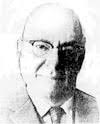
In 1922 Moncton, N.B., Canada-born atheist-freethinker Marshall Jerome Gauvin (1881-1978) pub. the booklet Did Jesus Christ Really Live?, making him a hit on the freethought circuit; "The orthodox idea that Christ was the son of God - God himself in human form - that he was the creator of the countless millions of glowing suns and wheeling worlds that strew the infinite expanse of the universe; that the forces of nature were the servants of his will and changed their courses at his command - such an idea has been abandoned by every independent thinker in the world - by e very thinker who relies on reason and experience rather than mere faith--by every man of science who places the integrity of nature above the challenge of ancient religious tales. Not only has the divinity of Christ been given up, but his existence as a man is being more and more seriously questioned. Some of the ablest scholars of the world deny that he ever lived at all. A commanding literature dealing with the inquiry, intense in its seriousness and profound and thorough in its research, is growing up in all countries, and spreading the conviction that Christ is a myth. The question is one of tremendous importance. For the Freethinker, as well as for the Christian, it is of the weightiest significance. The Christian religion has been and is a mighty fact in the world. For good or for ill, it has absorbed for many centuries the best energies of mankind. It has stayed the march of civilization, and made martyrs of some of the noblest men and women of the race: and it is to-day the greatest enemy of knowledge, of freedom, of social and industrial improvement, and of the genuine brotherhood of mankind. The progressive forces of the world are at war with this Asiatic superstition, and this war will continue until the triumph of truth and freedom is complete. The question, 'Did Jesus Christ Really Live?' goes to the very root of the conflict between reason and faith; and upon its determination depends, to some degree, the decision as to whether religion or humanity shall rule the world." Yes, the character of Christ could have been invented! The literature of the world is filled with invented characters; and the imaginary lives of the splendid men and women of fiction will forever arrest the interest of the mind and hold the heart enthralled. But how account for Christianity if Christ did not live? Let me ask another question. How account for the Renaissance, for the Reformation, for the French Revolution, or for Socialism? Not one of these movements was created by an individual. They grew. Christianity grew. The Christian church is older than the oldest Christian writings. Christ did not produce the church. The church produced the story of Christ. "The Jesus Christ of the Gospels could not possibly have been a real person. He is a combination of impossible elements. There may have lived in Palestine, nineteen centuries ago, a man whose name was Jesus, who went about doing good, who was followed by admiring associates, and who in the end met a violent death. But of this possible person, not a line was written when he lived, and of his life and character the world of to-day knows absolutely nothing. This Jesus, if he lived, was a man; and if he was a reformer, he was but one of many that have lived and died in every age of the world. W hen the world shall have learned that the Christ of the Gospels is a myth, that Christianity is untrue, it will turn its attention from the religious fictions of the past to the vital problems of to-day, and endeavor to solve them for the improvement of the well-being of the real men and women whom we know, and whom we ought to help and love."
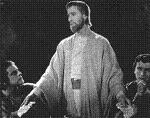
On Apr. 19, 1927 Cecil B. De Mille's The King of Kings debuts, reverently starring London-born H.B. Warner (Henry Byron Charles Stewart Warner-Lickfold) (1875-1958), as Jesus Christ, Dorothy Cumming as Mary, Ernest Torrence as Peter, Joseph Schildkraut as Judas, and Jacqueline Logan as Mary Magdalene; watch film.
In 1932 images of Jesus are found in Dura-Europos in Syria, becoming the earliest known (until ?).
In 1946 Durham-born English atheist writer Archibald Horace Mann Robertson (1886-1961) pub. the book Jesus: Myth or History?, which contains the conclusion: "Jesus, then, is a myth. The story of the God-man is a literary creation, refashioned (as Celsus pointed out in the second century) "three times, four times, and many times" in the interest of the movement which evolved it... But Jesus is also history... Had he never lived, the Christian creed would have evolved very much as we know it, but Pontius Pilate would not have been immortalized." In 1954 Robertson pub. the book The Origins of Christianity (rev. ed. pub. 1962); Ch. V is titled "The Legend of Jesus Christ".
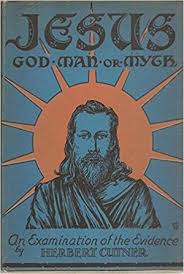
On Jan. 1, 1950 Hull-born English freethinker Herbert Cutner (1881-1969) pub. the book Jesus: God, Man, or Myth?: An Examination of the Evidence, claiming that Jesus wasn't a man turned into a god, but a god turned into a man, and that his earliest mentioner St. Paul never thought of Jesus as a man, but as a spiritual being found in a spiritual sense within oneself, explaining why the early Church had a hard time accepting him, becoming a Freethinker/atheist Bible; "I make no apology for the fact that this work is controversial. It was unavoidably so, as many of the defenders of the 'man' Jesus, as well as those who insist that he was a 'God,' have bitterly assailed, not only on critical but on personal grounds, those of us who have insisted that the story of Jesus is just a myth. I hope, however, that readers will see something beyond the controversial part - will find a real criticism of the so-called evidences brought forward to prove that Jesus Christ lived on earth"; "It is surely very strange that though Paul talks incessantly of Christ Jesus, he never mentions 'Jesus of Nazareth.' He never mentions the wonderful teaching of Jesus, nor his still more wonderful miracles. Now, if the Gospel stories are true, and if Paul was converted so soon after the death of Jesus, and if he were also continually wrangling with the Apostles, how is it that in the Epistles we do not get more of Jesus of Nazareth, and a little less of Christ Jesus?"; The whole fabric of Vicarious Suffering with its Savior and its Cross is nothing but a huge imposture, that in fact it has literally no meaning. A suffering God is just a pagan and Gnostic IDEA." - TLW's favorite work on the Jesus question?


On Sept. 16, 1953 Henry Koster's The Robe (20th Cent. Fox) debuts, based on the 1942 novel by Lutheran minister Lloyd Cassel Douglas, becoming the first movie filmed in the widescreen CinemaScope process of Henri Chretien (1879-1956); stars chicken-legged Richard Burton as Roman tribune Marcellus Gallio, who commands the Roman soldier detail that crucifies Jesus of Nazreth (Donald C. Klune) and wins his robe in a dice game then later repents and turns Christian, Victor Mature as his Christian slave Demetrius, Richard Boone as Pontius Pilate, Jean Simmons as Diana, miscast Richard Boone as Pontius Pilate, Ernest Thesiger as Tiberius, Michael Ansara as Judas, and Jay Robinson as Caligula in a role acted so well that he later has to see a pshrink; the only movie given 8 stars by the New York Daily News, 4 for the film and 4 for the process (4 is the usual max); the wide, wide color screen saves the industry, which was losing customers because of the new boob tube (TV), although many claim it almost kills the art; "It's fine if you want a system that shows a boa constrictor to better advantage than a man" (George Stevens); "The worst shape ever devised" (Rouben Mamoulian); "It is a formula for a funeral, or for snakes, but not for human beings" (Fritz Lang); "It wrecked the art of film for a decade" (Leon Shamroy); watch trailer.

In 1955 Crete-born novelist Nikos Kazantzakis (1883-1957) pub. novel The Last Temptation of Christ; English trans. pub. in 1960; filmed in 1988; portrays Christ as a little too human, begging an angel to let him down off the cross so he can marry Mary Magdalene and settle down and have pups, getting him excommunicated by the Greek Orthodox Church in 1955; the Roman Catholic Church puts it on its Prohibited Index, making it more popular?
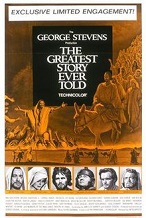
On Apr. 9, 1965 George Stevens' The Greatest Story Ever Told (United Artists) deubts, based on the 1949 Fulton Oursler novel, using an all-star cast to portray the Gospel story, with Max von Sydow playing a Viking Jesus, and Charlton Heston playing John the Baptist as if he were Moses?; Dorothy McGuire plays Virgin Mary, Claude Rains (final film role) plays King Herod, Telly Savalas plays Pontius Pilate, Martin Landau plays Caiaphas, David McCallum plays Judas Iscariot, Roddy McDowall plays Matthew, Joanna Dunham plays Mary Magdalene, Joseph Schildkraut plays Nicodemus, and Donald Pleasence plays Satan (Dark Hermit); 550 Navajos hired as Roman legionnaires go home for a tribal election, causing ROTC cadets to replace them; does $15.5M box office on a $20M budget; watch trailer; view clip; view clip.
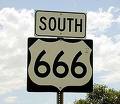

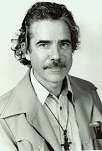




On Apr. 8, 1966 Time mag. seizes the chance to cash in on Millennium Fever by pub. an issue with the Easter ed. cover story Is God Dead? Toward a Hidden God; the cover features "Is God Dead" in big devil-red letters on a Hell-black background; the issue is really about the views of Am. radical Christian theologian Thomas Jonathan Jackson "J.J." Altizer (1927-2018) in his new book The Gospel of Christian Atheism, which combines Friedrich Nietzsche with G.W.F. Hegel and throws in William Blake; in 1966 Altizer and Am. theologian William Hughes Hamilton III (1924-2014) pub. Radical Theology and the Death of God; meanwhile on Apr. 30 (Walpurgisnacht) Chicago-born ex-circus roustabout, psychic, and organist (good actor) Anton Szandor LaVey (1930-97) comes out of the closet, shaves his head, and founds the Church of Satan in hip-to-it San Francisco, Calif., proclaiming 1966 as Year One Anno Satanas, going on to perform Satanic baptisms and be dubbed "the Black Pope" by the media, who makes him their 19666, er, 1966 darling? - it's red, it's rave?
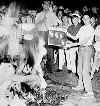

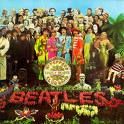
Speaking of gods dying in Year 666, on Mar. 4, 1966 comments by Beatle John Lennon in an interview with his friend-lover journalist Maureen Cleave (1941-) (inspiration for the Beatles song "Norwegian Wood") are pub. in the London Evening Standard, in which he utters the soundbyte: "Christianity will go. It will vanish and shrink. I needn't argue with that; I'm right and I will be proved right. We're more popular than Jesus now; I don't know which will go first, rock and roll or Christianity. Jesus is all right but his disciples are thick and ordinary. It's them twisting it that ruins it for me." After it is ignored in Britain, U.S. teen mag Datebook reprints the quote out of context on July 29 on its front cover, pissing-off Christian extremists in the U.S, who soon get into mass record burning and burning in effigy, causing the Beatles to have to fend off endless reporters' questions with lame semi-apologies; on Aug. 11, 1966 the beleaguered Beatles hold a press conference in Chicago, Ill., and John Lennon backtracked on his "more popular than Jesus" remarks, saying "I didn't mean it as a lousy anti-religious thing"; Beatlesmania develop a dark anti-Christian side, and by the end of the decade the Beatles have dumped Christanity forever? On Aug. 16, 1966 the Beatles perform at Shea Stadium in N.Y., the first show on their U.S. summer tour, taking in $304K from 55.6K fans, the largest show business gross to date, earning $160K for 30 min. On Aug. 29, 1966 (Mon.) the Beatles conclude their Fourth U.S. Tour (which opened on Aug. 12 in Chicago, Ill.) with their last public concert at Candlestick Park in San Francisco, Calif., too bad, the stands are half empty, causing concerns that their popularity is fading, causing EMI to pressure George Martin into releasing "Strawberry Fields Forever" and "Penny Lane" as a single, which works, bringing back their popularity, although the songs couldn't be included in the album, marring it; "San Francisco is 49 square miles surrounded by reality" (Paul Kantner of the Jefferson Airplane). On Nov. 9, 1966 John Lennon first meets Yoko Ono at a preview of her exhibition at Indica Gallery in Mason's Yard, Mayfair, London, featuring a panel on the ceiling with the word "yes" on it, climbing a ladder and viewing it through an attached microscope, after which she passed him a card reading "Breathe", then wouldn't let him hammer a nail into a white board that has a sign inviting visitors to do it because he didn't pay for admission, after which the gallery owner told her who he is (she allegedly didn't know), causing her to relent and offer to let him do it for five shillings, to which he replied "I'll give you an imaginary five shillings if you let me hammer an imaginary nail" - it was a long night, even layered and in a sleeping bag? On Nov. 24, 1966 the Beatles decide to reinvent themselves, and lock themselves up in a studio to begin recording their paradigm-shifting album #8 Sgt. Pepper's Lonely Hearts Club Band ("the world's first 41-min. single"), which goes on to become the #1 rock album of all time, launching the era of the studio album, selling 32M copies.
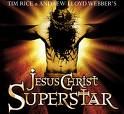
In Sept. 1970 Andrew Lloyd Webber (1948-) and Tim Rice (1944-) release their concept double album Jesus Christ Superstar (#1 in the U.S.), which sells $40M by the end of the year; banned by the BBC for being sacreligious, making it more popular?; it incl. the soings Superstar I Don't Know How to Love Him, King Herod's Song, Pilate's Dream, Hosanna, Gethsemane (I Only Want to Say), Simon Zealotes/Poor Jerusalem, Jesus Must Die. On Oct. 12, 1971 Webber and Rice debut their musical Jesus Christ Superstar at the Mark Hellinger Theatre in New York (711 perf.); dir. by Tom O'Horgan; the last seven days of the life of a most amazing Jew from Galilee, from the modern Jewish-Am. hippie POV, based on the concept album, starring Jeff Fenholt as Judas, Ben Vereen as Judas, and Bob Bingham as Caiaphas.
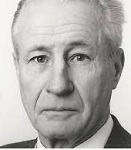
In 1971 English U. of London prof. George Albert "G.A." Wells (1926-2017) pub. the book The Jesus of the Early Christians: A Study in Christian Origins, questioning the historicity of Jesus Christ, causing a firestorm of controversy. In 1975 he pub. Did Jesus Exist?, which concludes that it's not very likely; he goes on to pub. several more books on the same topic until 2009 while making few converts. In 1982 he pub. The Historical Evidence for Jesus, followed by Religious Postures: Essays on Modern Christian Apologists and Religious Problems (1988), Who Was Jesus? A Critique of the New Testament Record (1989), Belief and Make-Believe: Critical Reflections on the Sources of Credulity (1991), What's in a Name? Reflections on Language, Magic and Religion (1993), The Jesus Legend (1996), and The Jesus Myth (1999). Too bad, in the late 1990s he accepts the existence of a mysterious itinerant Galilean miracle worker behind the Q document. He follows with The Acts of the Apostles: A Historical Record? (2000), Can We Trust the New Testament? Thoughts on the Reliability of Early Christian Testimony (2004), and Cutting Jesus Down to Size: What Higher Criticism Has Achieved and Where it Leaves Christianity (2009).
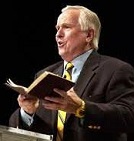
On Jan. 1, 1972 after starting out as an agnostic in college then seeing the light after trying to disprove Christianity and joining the Campus Crusade for Christ in 1964, Union City, Mich.-born Christian evangelist and apologist Joslin "Josh" McDowell (1939-) pub. the book Evidence That Demands a Verdict: Historical Evidence for the Christian Faith (rev. ed. 2009), which becomes a bestseller, spawning a series, followed by More Than A Carpenter (1977), with the soundbyte: "Evidence for Christianity in the Scriptures is not exhaustive, but it is sufficient", Answers to Tough Questions: Questions Skeptics Ask About the Christian Faith (w/Don Stewart) (1980), Reasons Skeptics Should Consider Christianity (w/Don Stewart) (1981), More Evidence That Demands a Verdict (1981), The Resurrection Factor (1981), with the ad blurb: " If Jesus Christ didn't rise from the dead, Christianity is worthless", Prophecy: Fact or Fiction (1981), Jesus: A Biblical Defense of His Deity (w/Bart Larson) (Jan. 1, 1983), He Walked Among Us: Evidence for the Historical Jesus (w/Bill Wilson) (1988), Skeptics Who Demanded a Verdict (1989) (C.S. Lewis, Charles Colson, Josh McDowell), and Evidence for the Historical Jesus: A Compelling Case for His Life and His Claims (2011); he goes on to pub. 150+ books; watch video; watch video; watch video; watch video.
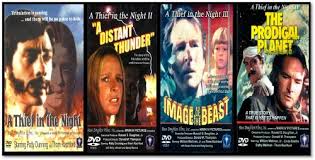
In 1972 Donald W. Thompson's A Thief in the Night debuts, about the Rapture, Tribulation, and Second Coming of Christ, written by Russell S. Doughten J. et al., launching the rock-and-horror-filled Christian film genre and becoming a big hit; it is followed by "A Distant Thunder" (1978), "Image of the Beast" (1981), and "The Prodigal Planet" (1983); by 2020 it is viewed by 300M people worldwide.
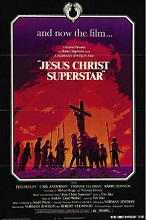
On Aug. 15, 1973 Norman Jewison's Jesus Christ Superstar (Universal Pictures) debuts, based on the 1971 Andrew Lloyd Webber/Tim Rice rock opera, starring Ted Neeley as Jesus Christ, Yvonne Elliman as Mary Magdalene, Barry Dennen as Pontius Pilate, Carl Anderson as Judas Iscariot, Bob Bingham as Caiaphas, Kurt Yaghijan as Annas, Josh Mostel as King Herod, Philip Toubus as Peter, Larry Marshall as Simon Zealotes, Richard Orbach as John, and Robert LuPone as James; does $24.5M box office on a $3.5M budget; features the songs Jesus Christ Superstar, I Don't Know How to Love Him, Simon's Song, Heaven on Their Minds; watch trailer;
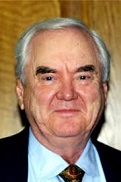
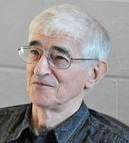
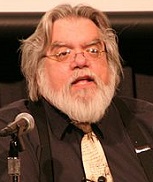

In 1985 the first annual Jesus Seminar, founded by Am. Bible scholar Robert W. Funk (1926-2005) (who claims that "Matthew, Mark, Luke and John 'marketed the Messiah' to make him conform to Christian doctrine that evolved after the death of Jesus", and that God is not appeased by blood sacrifice anyway) is held by scholars who cast ballots on each saying attributed to Jesus in the Gospels; red means that it was actually made by him, pink means he might have made it, gray means he didn't make it, but it might be close to one he made, and black means thumbs down; they end up casting black ballots for 82% of the words of Jesus in the Gospels, and only 16% red; noted members incl. Irish New Testament scholar John Dominic Crossan (1934-), Am. New Testament scholar (skeptic of Jesus' historical existence) Robert McNair Price (1954-), and English historian of religion Karen Armstrong (1944-), who in 2000 pub. the book The Battle for God: Fundamentalism in Judaism, Christianity and Islam; "Jesus did not ask us to believe that his death was a blood sacrifice, that he was going to die for our sins." (Robert W. Funk)
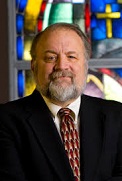
In 1987 Detroit, Mich.-born Christian Ph.D apologist Gary Robert Habermas (1950-) pub. his first book Did Jesus Rise from the Dead? The Resurrection Debate (w/Antony Flew), going on to pub. 40+ books, half of them attempting to prove Jesus' resurrection; watch video; watch video; watch video; watch video.

In 1987 New York City-born artist Andres Serrano (1950-) produces Piss Christ, a photo of a crucifix in a glass of Serrano's urine, underwritten by the U.S. Nat. Endowment for the Arts, causing an outcry accusing it of blasphemy; in 1999 it is sold for $277K.

On Aug. 12, 1988 Martin Scorsese's The Last Temptation of Christ (Cineplex Odeon Films) (Universal Pictures) debuts, based on the 1955 Nikos Kazantzakis novel, starring Willem Dafoe as Jesus of Nazreth, who begs to be let off the cross so he can go back to a normal life and have a babe and kids, while a Peter Gabriel score rocks the background?; voice of the Devil by English playwright Leo Marks (1920-2001); its debut stirs bitter protests from humorless Christians - by 2006 Dan Brown's flick only gets minor protests? Watch trailer; view clip; view clip; view clip; view clip; view clip.

On Nov. 1, 1991 N.Y.-born Roman Catholic biblical scholar-priest John Paul Meier (1942-) pub. vol. 1 of his super-researched A Marginal Jew: Rethinking the Historical Jesus: The Roots of the Problem and the Person, which tries to "recover, recapture, or reconstruct" the historical Jesus using modern historical methods incl. the apocryphal gospels, and concludes that he was no magician or political leader but a you know what who wasn't even mentioned in rabbinical lit. until the late 2nd-early 3rd cents.; followed by vol. 2 " Mentor, Message, and Miracles" (Nov. 1, 1994), vol. 3 "Companions and Competitors"(Sept. 18, 2001), vol. 4 "Law and Love" (May 26, 2009), containing the soundbyte: "The real enigma is how Jesus can at one and the same time affirm the Law as the given, as the normative expression of God's will for Israel, and yet in a few individual cases or legal areas (e.g., divorce and oaths) teach and enjoin what is contrary to the Law, simply on his own authority", and vol. 5 "Probing the Authenticity of the Parables"(Jan. 5, 2016), which claims that only four parables can be considered historical incl. the Mustard Seed, the Evil Tenants, the Talents, and the Great Supper - I lost almost 12 pounds?

In 1999 Canadian writer Earl J. Doherty (1941-) pub. The Jesus Puzzle: Did Christianity Begin with a Mythical Christ? Challenging the Existence of an Historical Jesus, followed by Challenging the Verdict: A Cross-examination of Lee Strobel's 'The Case for Christ' (2001), and Jesus: Neither God nor Man: The Case for a Mythical Jesus (2009), all backing his thesis that Jesus never lived, and that Paul thought of him as a spiritual being executed in a spiritual realm, making him the #1 modern Jesus mythicist.

In 1999 Mass.-born Acharya S (Dorothy Milne Murdock) (1960-2015) pub. the book The Christ Conspiracy: The Greatest Story Ever Sold, which claims that the Christ story is a Roman fraud based on pagan myths; "Early Christian history [appears] to be largely mythical, by sorting through available historical and archaeological data."

In 2000 after vacationing in Tahiti in 1994 and reading Sidney Sheldon's "Doomsday Conspiracy", beginning "to suspect that maybe I could write a 'thriller' of this type one day", Exter, N.H.-born Daniel "Dan" Brown (1964-) son of Phillips Exeter Academy math prof. Richard G. Brown and musician Constance Brown), educated at Phillips Exeter Academy and Amherst College pub. Angels and Demons, about how the Illuminati are real and out ta getchya, introducing Harvard U. prof. Robert Langdon; filmed in 2009. Pass the cilice, Mother T? On Mar. 18, 2003 (two days after the U.S. invades Iraq) he pub. The Da Vinci Code; 10K advance copies and 230K initial press run; 23,578 sold the first week, making #1 on the NYT bestseller list ("the novel that ate the world"); "Renowned curator Jacques Sauniere staggered through the vaulted archway of the museum's Grand Gallery" (first line); "O, Draconian devil! Oh, lame saint!"; "So dark the con of man"; "In London lies a knight a pope interred/ His labor's fruit a Holy wrath incurred/ You seek the orb that ought be on his tomb/ It speaks of Rosy flesh and seeded womb"; "The Holy Grail 'neath ancient Roslin waits/ The blade and chalice guarding o'er Her gates/ She rests at last beneath the starry skies"; Harris Tweed-loving Harvard U. religious symbology prof. Robert Langdon (language don?), Capt. Bezu Fache (busy fish?) and Lt. Jerome Collet (roam around and collate his boss' microfiche?) of the DCPJ, Jacques Sauniere (saner?) of the Louvre, "Princess" Sophie (Sofia) Neveu (renovate?) alias St. Clair (not Plantard), monk Silas (Sauniere's Judas?) and Bishop Manuel Aringarosa (ring around the rosey?) of Opus Dei (which has only lay members?), Andre Vernet (wears vernier Rolex timepieces?) of the Depository Bank of Zurich, Sir Leigh Teabing (Sir Lipton tea bag?) alias the Teacher at Chateau Villette (1668) and his manservant Remy Legaludec (legal duke?) from Lyons and his Medusa revolver, the Da Vinci cryptex with password SOFIA, er, APPLE, fleur de lis, PHI, Amon L'Isa, 325 Council of Nicea, security warden Claude Grouard (guard?), Pamela Gettum (I'll get um for ya?) of King's College library, Church of Saint-Sulpice in Paris with the first Rose Line and Sister Sandrine Bieil (bee eye?), Vatican Biblioteca Astronomica, Gare Saint-Lazre train station, 24 Rue Haxo and the Bois de Boulogne ("garden of earthly delights"), Friday the 13th of Oct. 1307, Leonardo da Vinci (always called Leonardo, never da Vinci?) and his Vitruvian Man, Mona Lisa, Madonna of the Rocks and skitoma-filled Last Supper, Sofia, 1099 Priory of Sion and Godefroi de Bouillon, Pentacle of Venus and Hieros Gamos, Dead Sea Scrolls, Sang Real not San Greal, Mary Magdalene of the tribe of Benjamin and Jesus of the House of David equals unbelievable; Atbash cipher and Sheshach alias Babel, Sir Isaac Newton and Alexander Pope, 1185 London Temple Church and 1065 Westminster Abbey with College Garden and octagonal Chapter House, 1446 Rosslyn Chapel (Cathedral of Codes) with the Boaz and Jachin pillars, Fibonacci sequence 13-3-2-21-1-1-8-5; "Yo soy un espectro" (Silas) (p. 56); starting with Ch. 58 the book gets rather preachy?; "Leonardo was one of the keepers of the secret of the Holy Grail. And he hid clues in his art" (Teabing) (p. 230); "Almost everything our fathers taught us about Christ is false... More than eighty gospels were considered for the New Testament, and yet only a relative few were chosen for inclusion - Matthew, Mark, Luke, and John, among them... The Bible, as we know it today, was collated by the pagan Roman emperor Constantine the Great... a lifelong pagan who was baptized on his deathbed, too weak to protest" (Teabing) (pp. 230-1); "At this gathering many aspects of Christianity were debated and voted upon - the date of Easter, the role of the bishops, the administration of sacraments, and of course, the divinity of Jesus... Until that moment in history, Jesus was viewed by His followers as a mortal prophet... a great and powerful man, but a man nonetheless.... Jesus' establishment as 'the son of God' was officially proposed and voted on by the Council of Nicaea... A relatively close vote at that"; "It was all about power... Christ as Messiah was critical to the functioning of Church and state. Many scholars claim that the early Church literally stole Jesus from His original followers, hijacking His human message, shrouding it in an impenetrable cloak of divinity, and using it to expand their own power" (Teabing) (p. 233); "The twist is this... Because Constantine upgraded Jesus' status almost four centuries after Jesus' death, thousands of documents already existed chronicling His life as a mortal man. To rewrite the history books, Constantine knew he would need a bold stroke. From this sprang the most profound moment in Christian history... Constantine commissioned and financed a new Bible, which omitted those gospels that spoke of Christ's human traits and embellished those gospels that made Him godlike. The earlier gospels were outlawed, gathered up, and burned" (Teabing) (p. 234); "Fortunately for historians... some of the gospels that Constantine attempted to eradicate managed to survive... the Dead Sea Scrolls were found in the 1950s hidden in a cave near Qumran in the Judean desert. And, of course, the Coptic Scrolls in 1945 at Nag Hammadi. In addition to telling the true Grail story, these documents speak of Christ's ministry in very human terms. Of course, the Vatican, in keeping with their tradition of misinformation, tried very hard to suppress the release of these scrolls. And why wouldn't they? The scrolls highlight glaring historical discrepancies and fabrications, clearly confirming that the modern Bible was compiled and edited by men who possessed a political agenda - to promote the divinity of the man Jesus Christ and use His influence to solidify their own power base" (Teabing) (p. 234); "The Grail... is symbolic of the lost goddess. When Christianity came along, the old pagan religions did not die easily. Legends of chivalric quests for the lost Grail were in fact stories of forbidden quests to find the lost sacred feminine. Knights who claimed to be 'searching for the chalice' were seaking in code as a way to protect themselves from a Church that had subjugated women, banished the Goddess, burned nonbelievers, and forbidden the pagan reverence for the sacred feminine" (Langdon) (pp. 238-9); "It was not Peter to whom Christ gave directions with which to establish the Christian Church. It was Mary Magdalene... Jesus was the original feminist. He intended for the future of His Church to be in the hands of Mary Magdalene" (Teabing) (p. 248); "Behold the greatest cover-up in human history. Not only was Jesus Christ married, but He was a father. My dear, Mary Magdalene was the Holy Vessel. She was the chalice that bore the royal bloodline of Jesus Christ. She was the womb that bore the lineage, and the vine from which the sacred fruit sprang forth" (Teabing) (p. 249); becomes bestselling adult novel of all time (60M by 2006), spawning the new genre of fractured history written at the 8th grade level for the history-starved masses ("You don't hate history, you just hate your own history"?) spoon-fed during a ridiculous murder adventure; milks the fallacy of the evil albino, the fallacy of the talking killer, and the fallacy of the Bride of Christ not being his Church but his hot freckled red-haired bunkbunny Mary Magdalene, whose DNA (check out that melanocritia-1 receptor?) is more valuable than weapons-grade plutonium?; the best hook is the novel's opening: "FACT... All descriptions of artwork, architecture, documents, and secret rituals in this novel are accurate", spawning the Anti-Da Vinci Code Industry; "Do we not have the right to be accompanied by a wife, as the other apostles and the brothers of the Lord and Cephas?" (1 Cor. 9:5); watch trailer; watch video; watch video; watch video; watch video; watch video.




On Feb. 25, 2004 Mel Gibson's The Passion of the Christ (Icon Productions) (Newmarket Films) debuts, based on the visions of 19th cent. German mystic nun Anne Catherine Emmerich (1774-1824) (who is beatified by Pope John Paul II on Oct. 3), reenacting the Catholicized Gospel story of the Stations of the Cross with actors speaking the original languages (with subtitles) is a bloody lovefest for millions of Christians, bringing in $370M U.S. and $611.9M worldwide box office on a $30M budget (#3 movie of 2004), becoming the top-grossing R-rated film in history (until ?), and making Peekskill, N.Y.-born Sydney, Australia-raised Mel Colmcille Gerard Gibson (1956-) too rich to want to be Pope Mel I?; he gyps the screenwriter Benedict Fitzgerald, who later sues him; too bad, in Mar. 2003 Mel's ultra-conservative Roman Catholic daddy Hutton Peter "Red" Gibson (1918-) (the 1968 "Jeopardy!" grand champ, with a genius IQ) gave an interview to The New York Times Mag., saying that Vatican II was a "Masonic plot backed by the Jews", that the 9/11 attacks were perpetrated by remote control, and that the WWII Holocaust was impossible as stated because the Nazis couldn't have disposed of 6M corpses without a trace, and census figures prove there were more Jews in Europe after WWII than before, also adding that certain Jews want a OWG with a global religion, then reiterated these views a week before the film's release to radio talk show host Steve Feuerstein, after which charges of anti-Semitism are denied by Mel, who is defended by Focus on the Family and other anti-Semitic, er, Christian groups. Watch trailer; view clip; view clip; view clip; view clip; view clip; view clip.

In 2005 Lawrence, Kan.-born New Testament scholar Bart Denton Ehrman (1955-) pub. the NYT beselling book Misquoting Jesus: The Story Behind Who Changed the Bible and Why (Whose Word Is It?), exposing the New Testament's dirty laundry of inconsistent and unsure text, making it impossible to know what it really says, even in matters of basic doctrine, pissing-off Bible-thumpers, who mainly studiously ignore him?; watch video.
On Feb. 26, 2007 "Titanic" film dir. James Cameron announces that 10 small caskets discovered in 1980 in Talpiot, a suburb of Jerusalem contain the bones of Jesus Christ, Mary Magdalene, and their wayward child "Judah, son of Jesus", and produces The Lost Tomb of Jesus, dir. by Simcha Jacobovici of Toronto, which debuts on the Discovery Channel on Mar. 4 - he's fallen a long ways since "Titanic"?

On Feb. 10, 2009 Am. historian Richard Cevantis Carrier (1969-) pub. Not the Impossible Faith, Why Christianity Didn't Need a Miracle to Succeed, followed by Why I Am Not a Christian: Four Conclusive Reasons to Reject the Faith (2011`), Proving History: Bayes's Theorem and the Quest for the Historical Jesus (2012), and On the Historicity of Jesus: Why We Might Have Reason for Doubt (2014)., developing his proof that Jesus never existed.

On Apr. 15, 2013 popular Western Mich. U. ancient history prof. (Lutheran) Paul Louis Meier (1930-) pub. the article The Real Jesus: New Evidence from History and Archeology; watch video.

On Feb. 19, 2016 Kevin Reynolds' Risen (Affirm Films) (Columbia Pictures) debuts, starring Joseph Fiennes as Roman tribune Clavius, who is ordered by Pontius Pilate (Peter Firth) to find the stolen body of Jewish Messiah Yeshua (Jesus) (Cliff Curtis), only to have a personal experience and go Christian, then forget to write a bestseller about it; does $46.1M box office on a $20M budget; watch trailer.
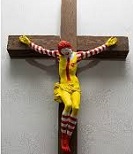
On Jan. 11, 2019 Jani Leinon's sculpture McJesus causes hundreds of Christians to violently protest in front of the Haifa Museum of Art in Israel.